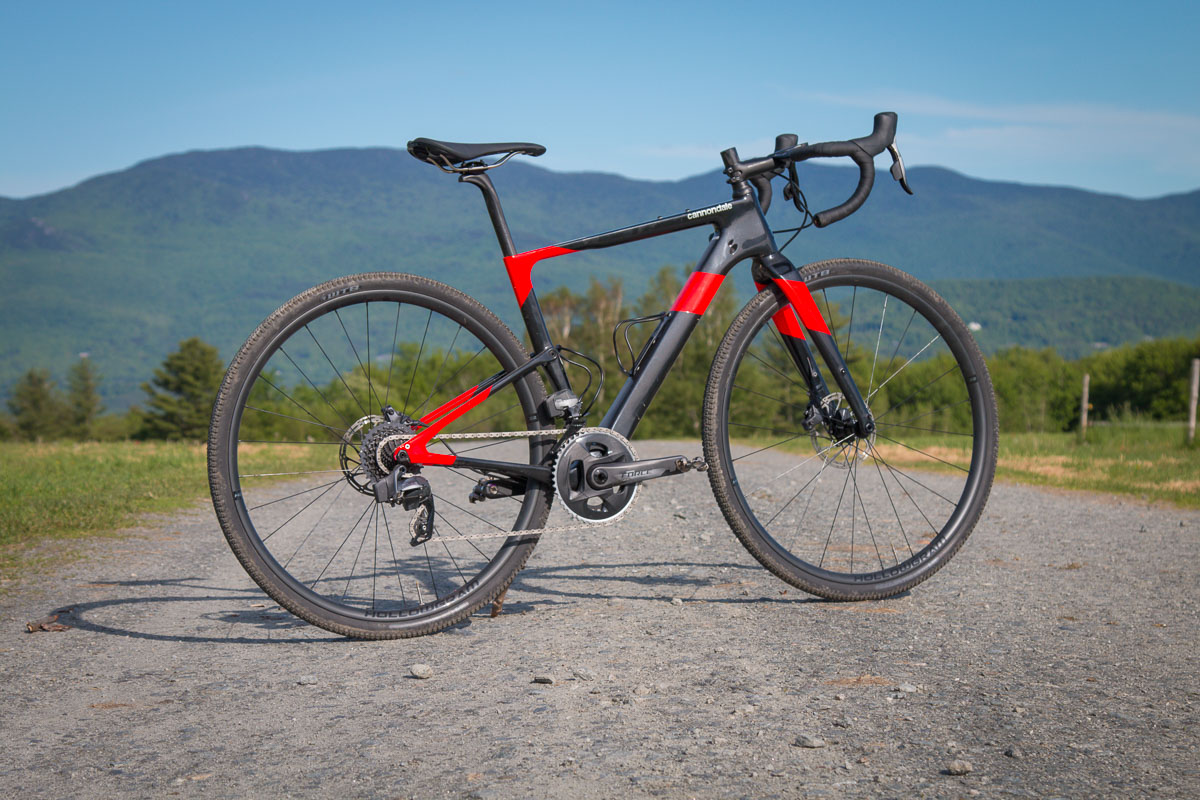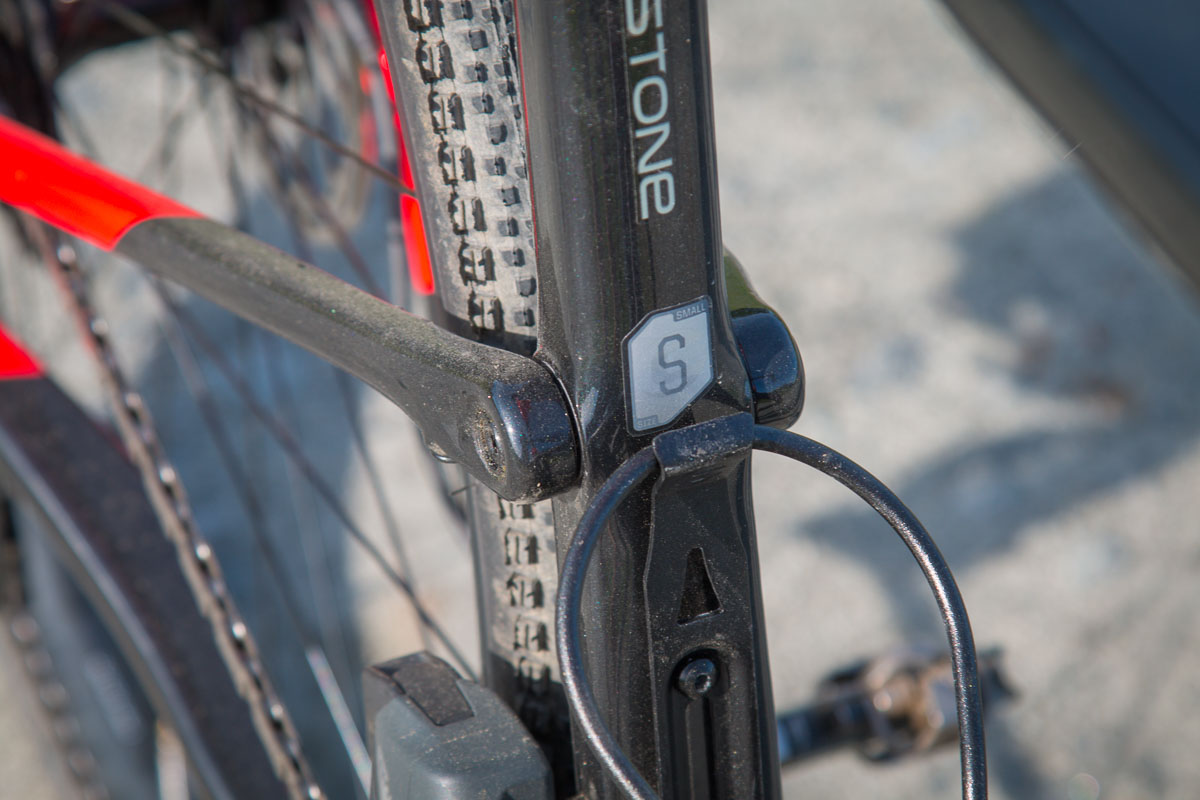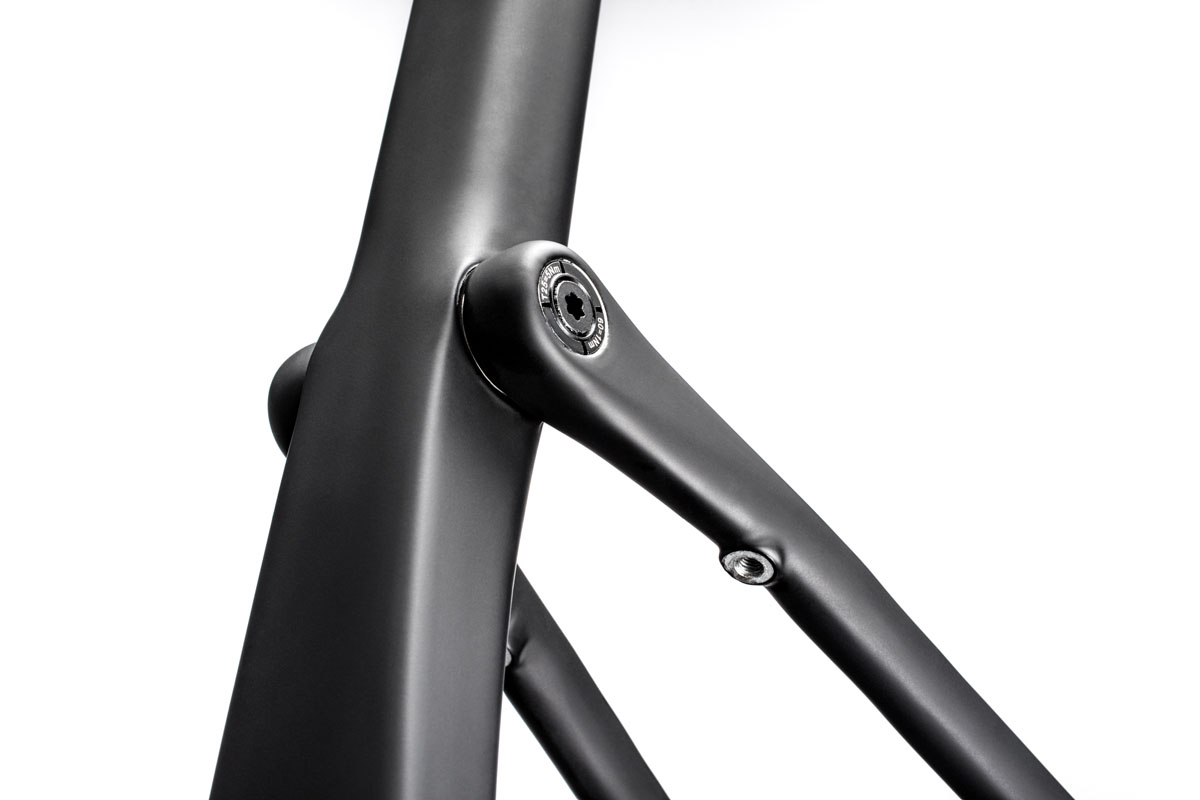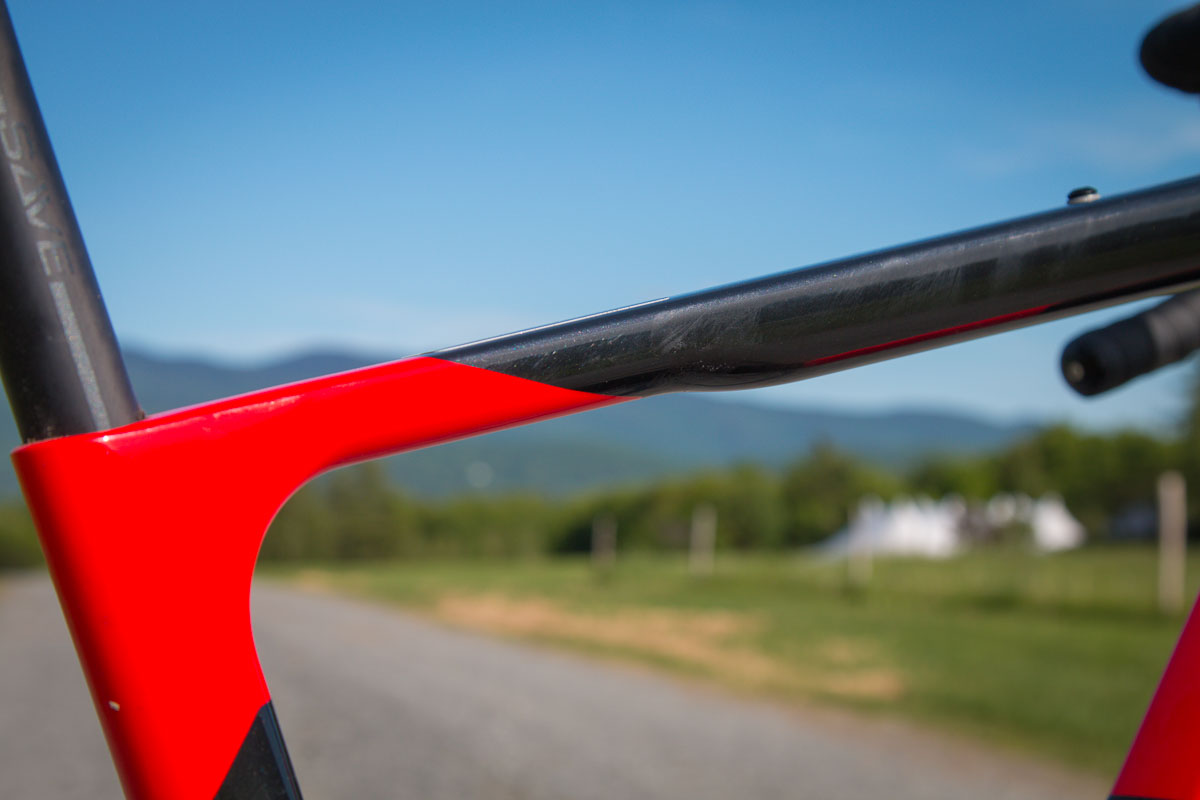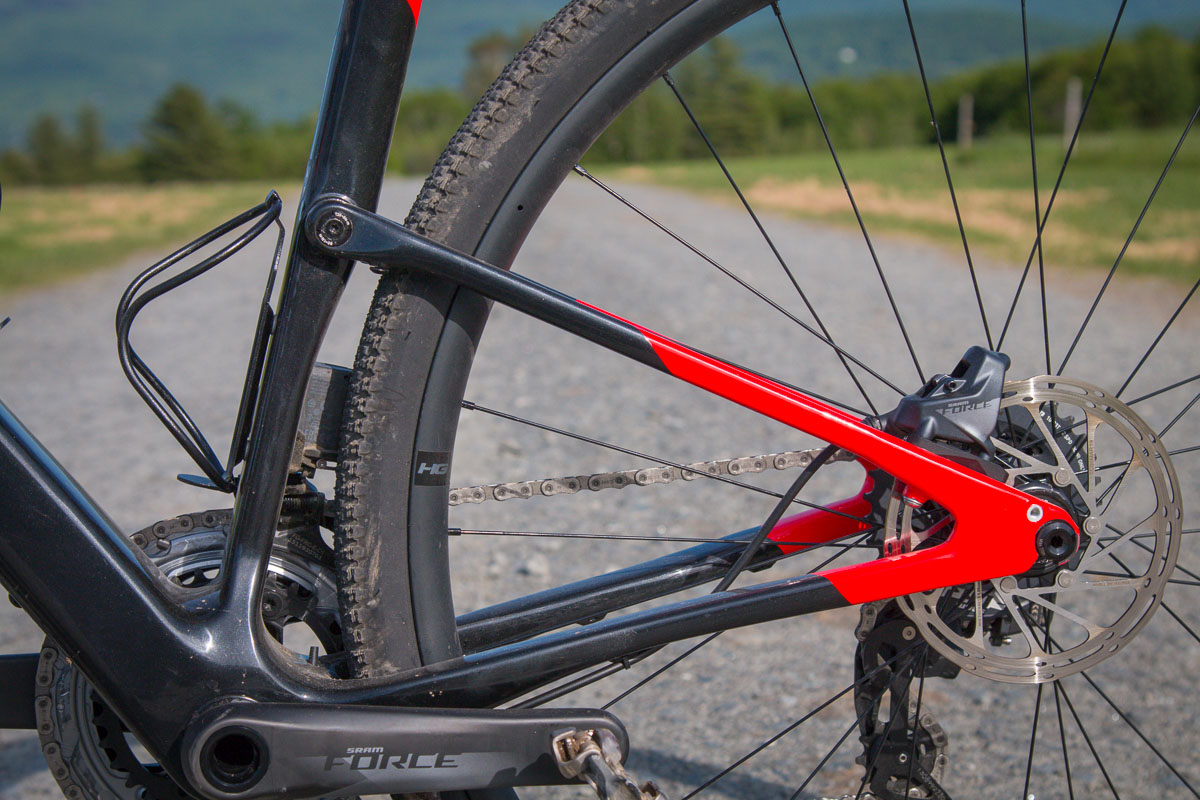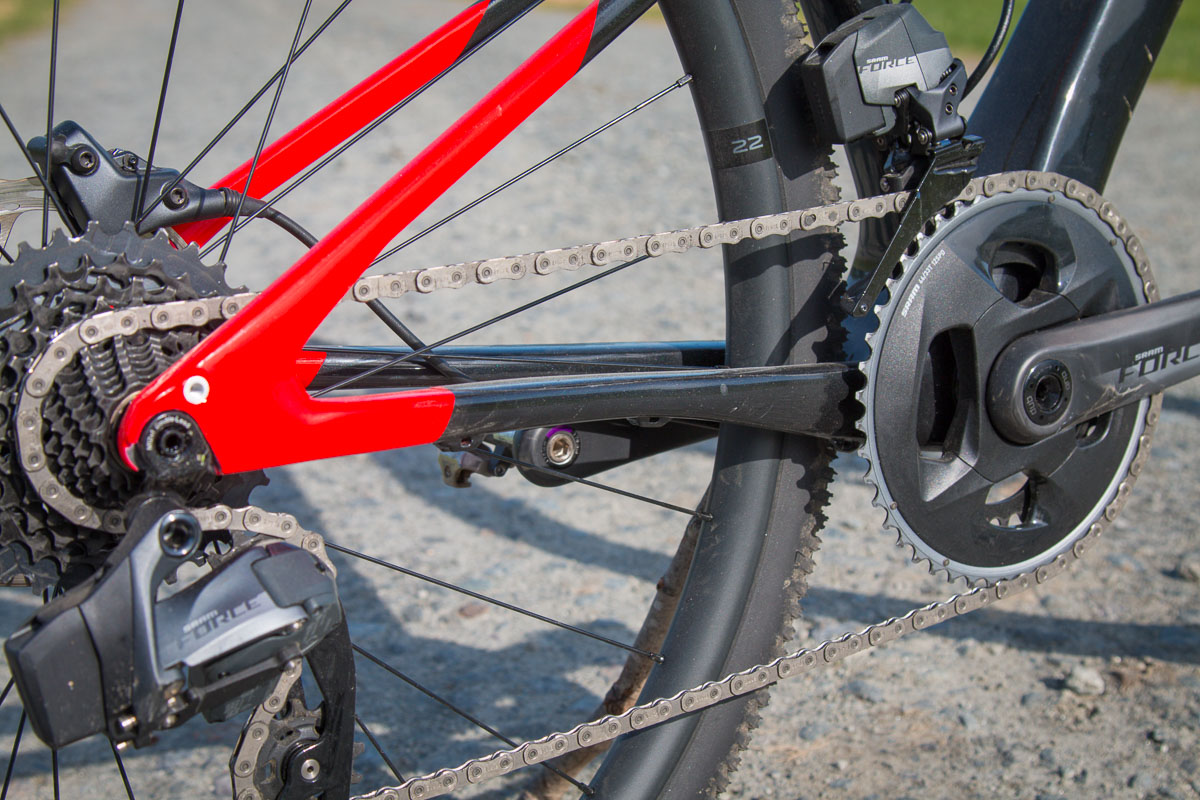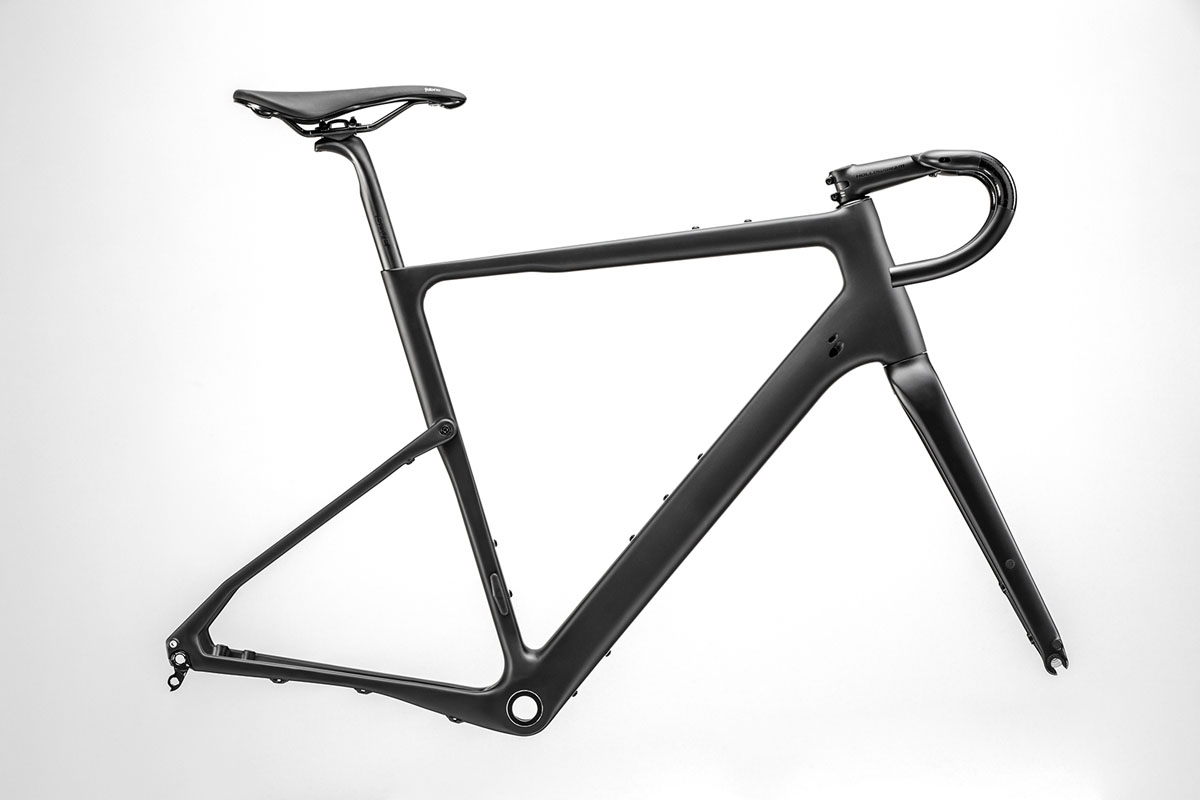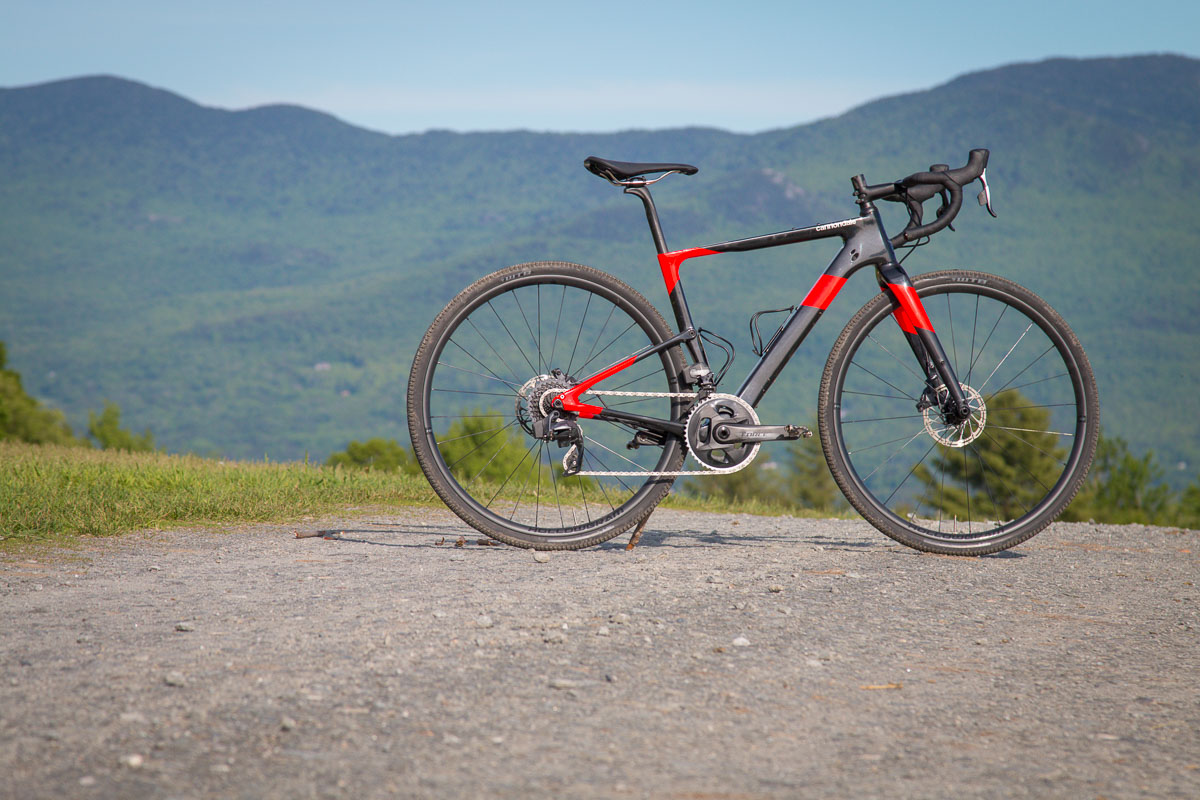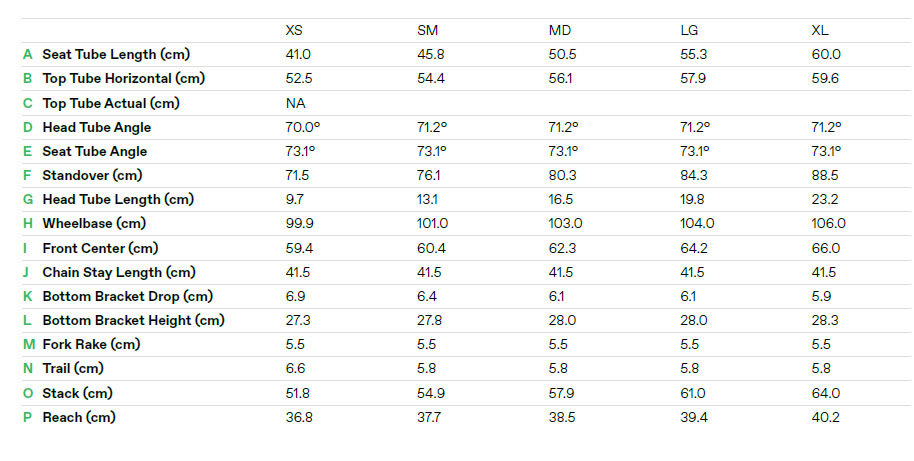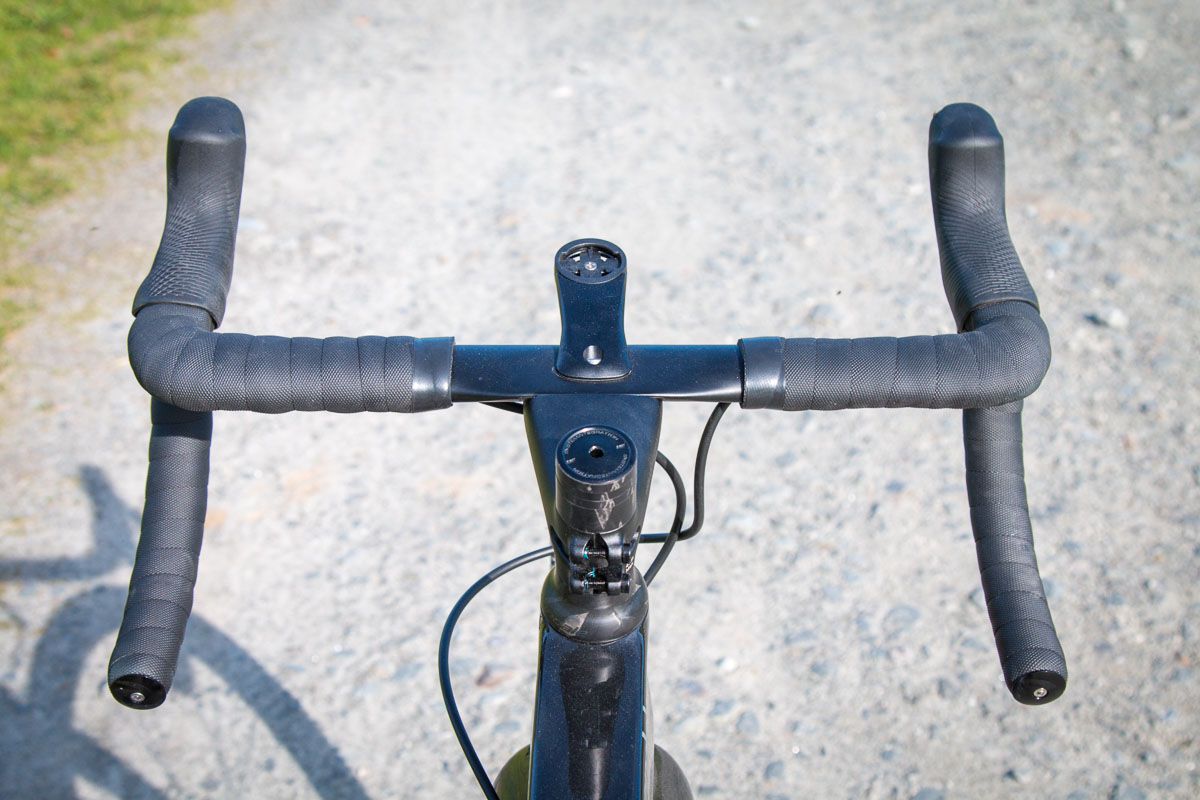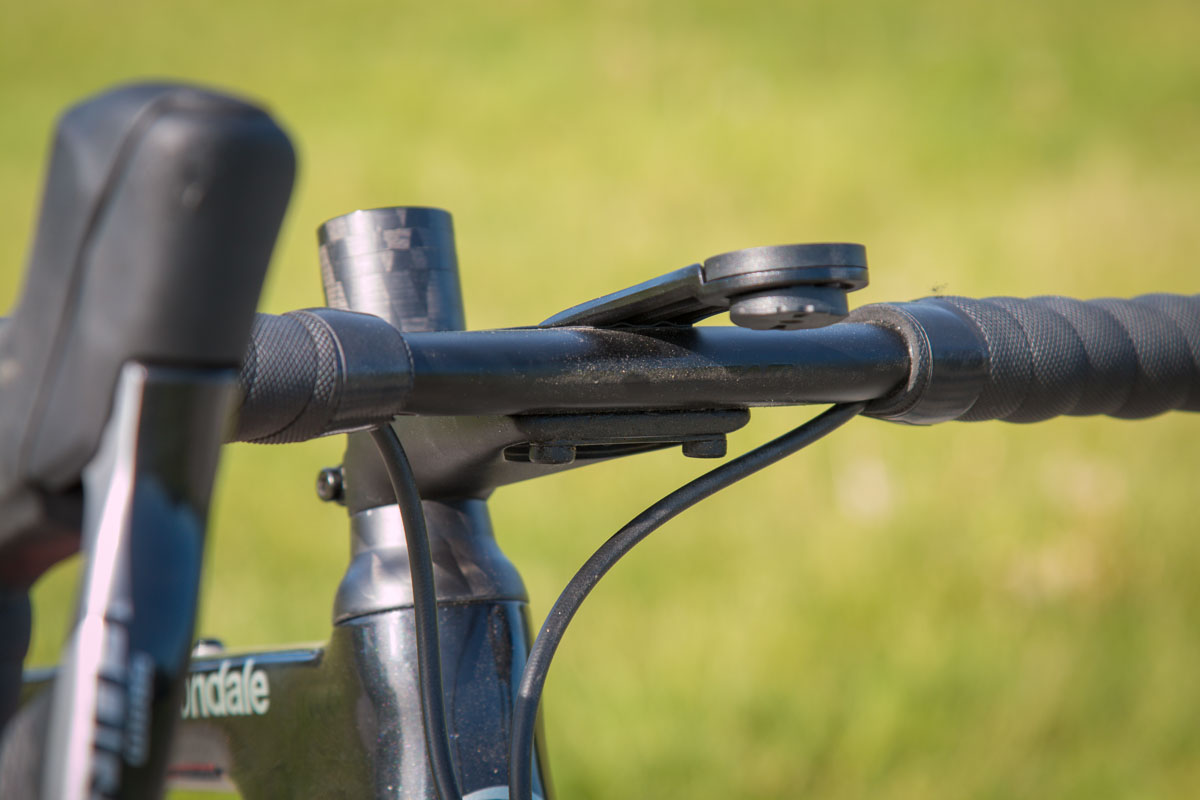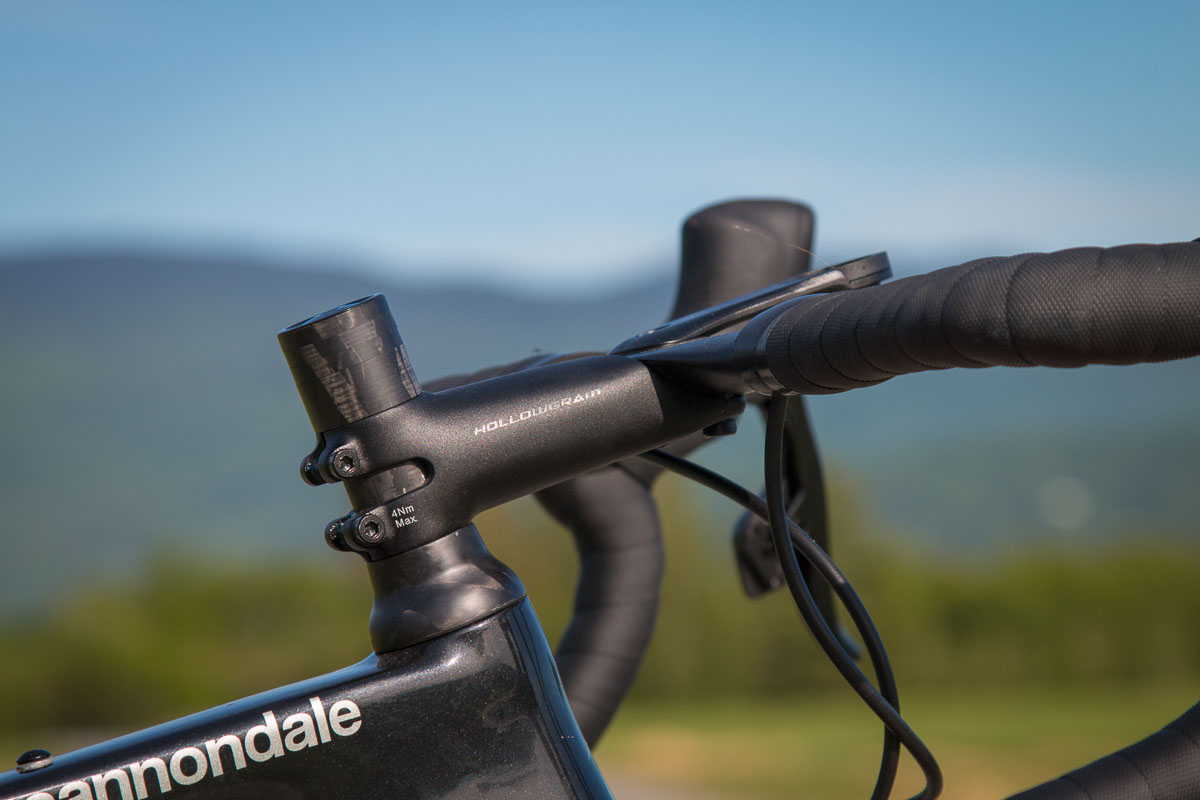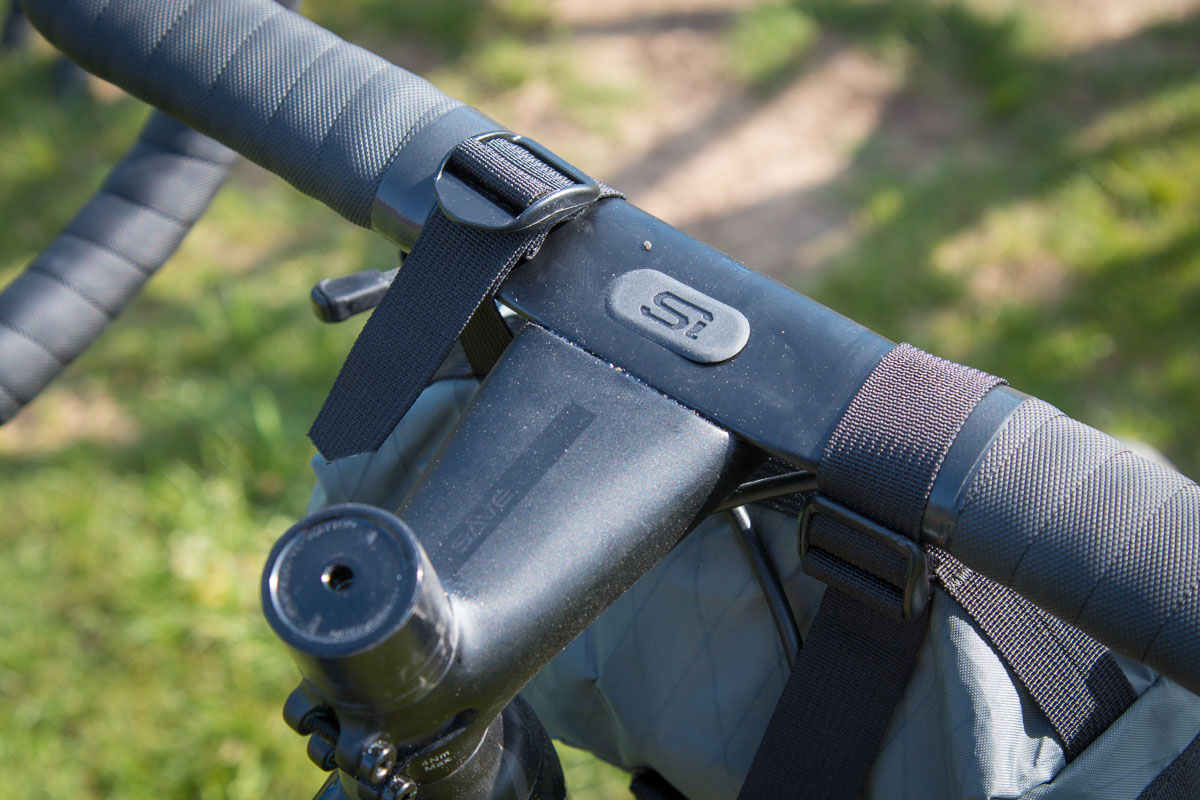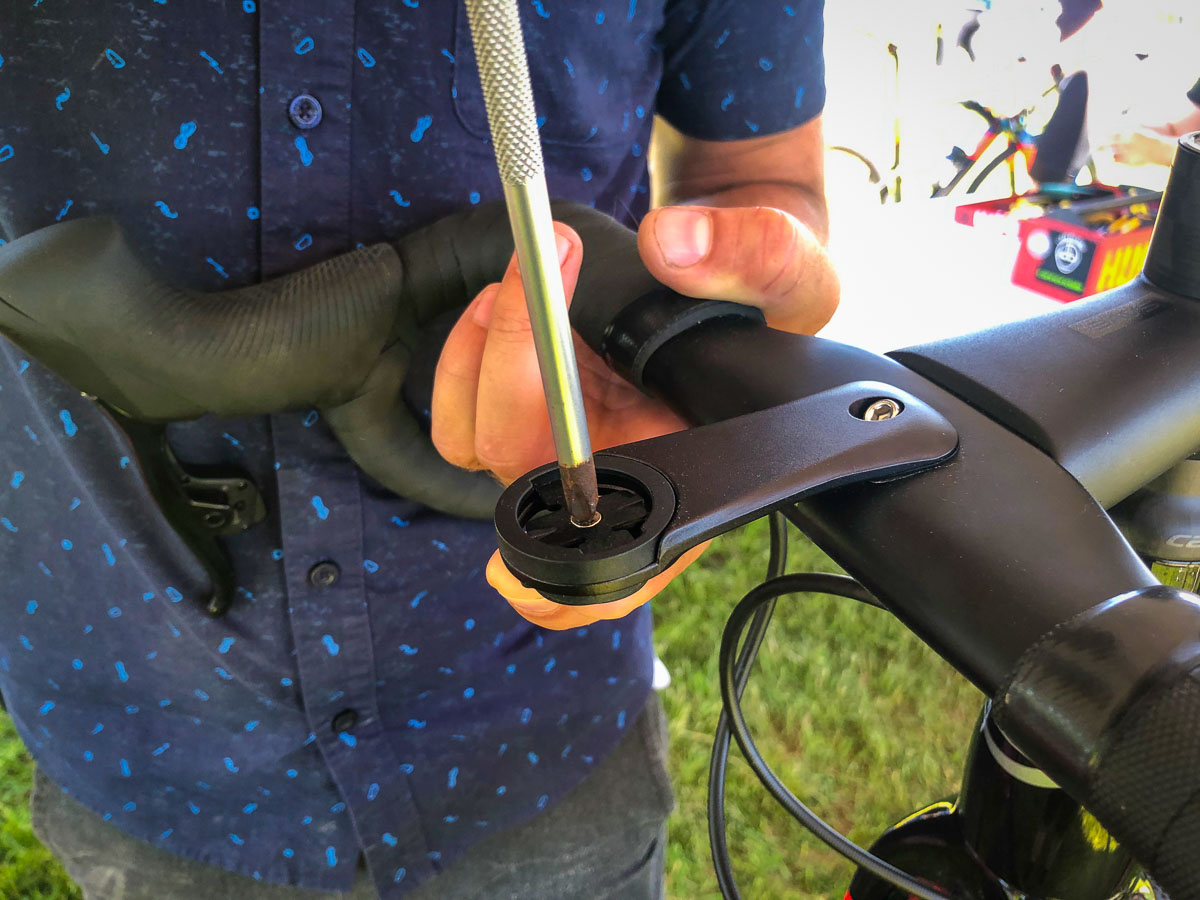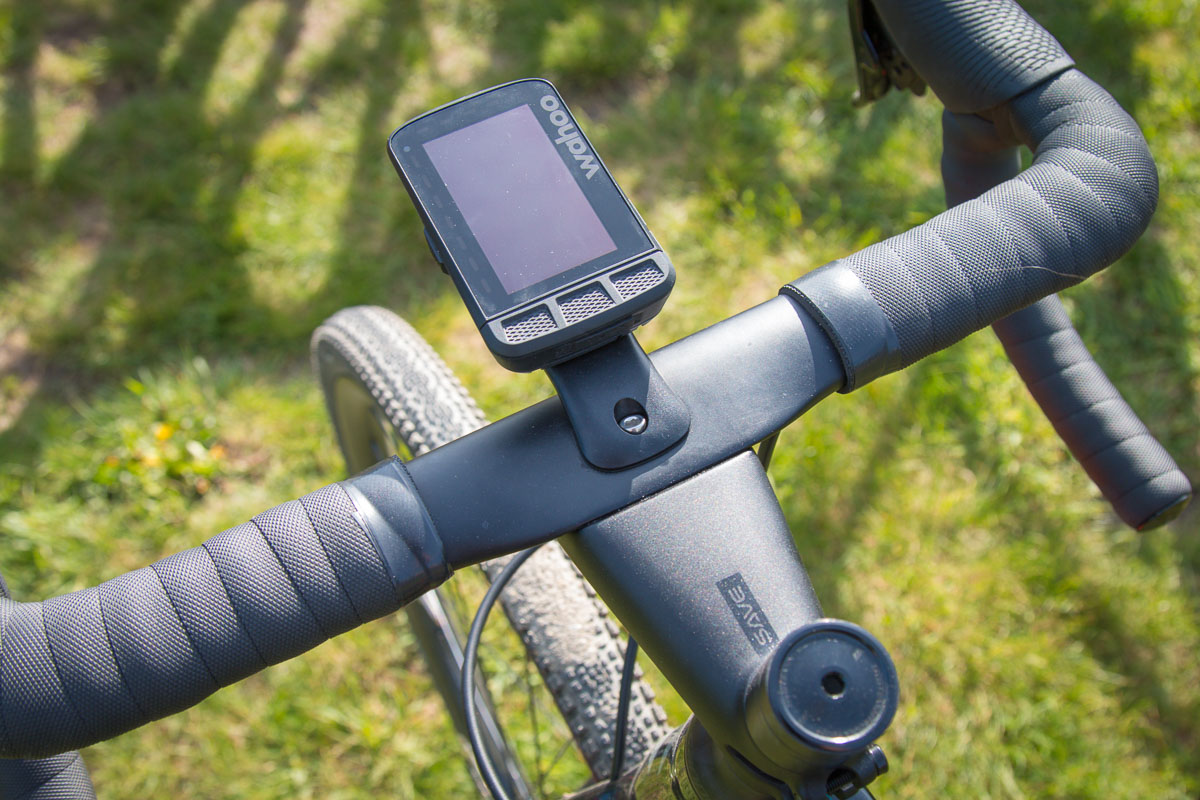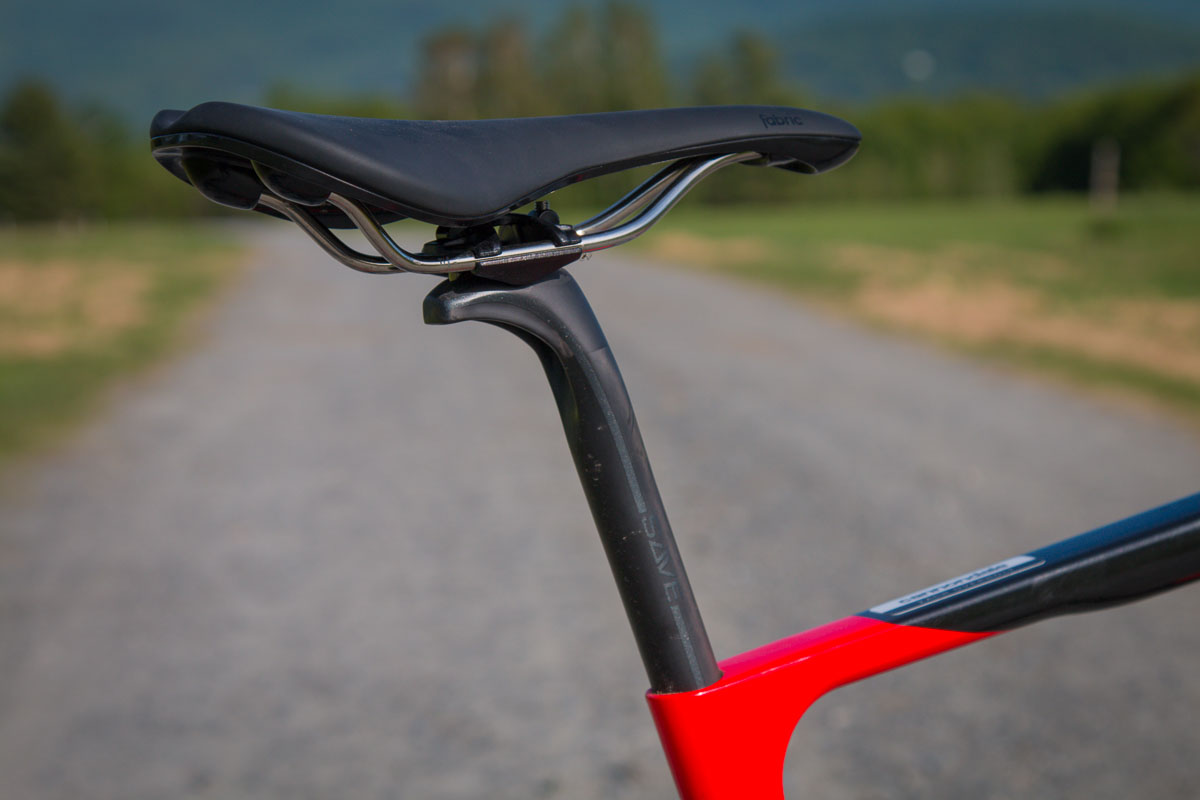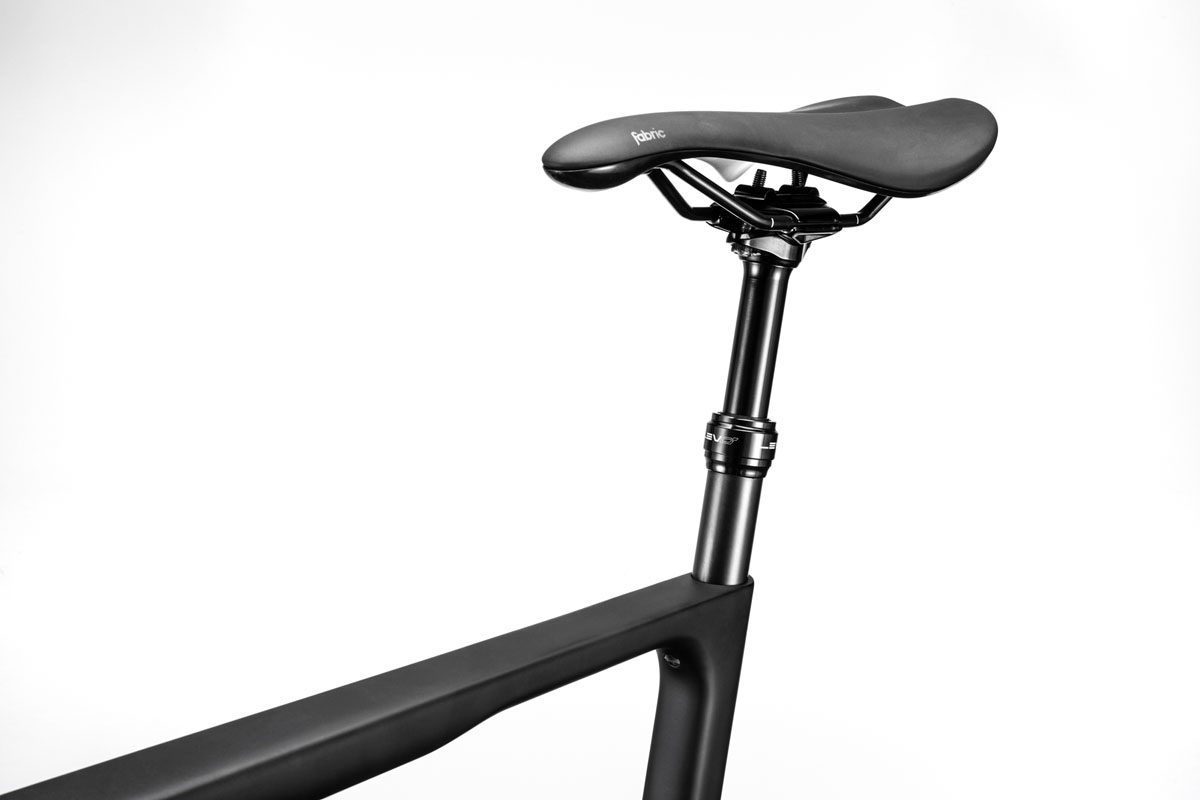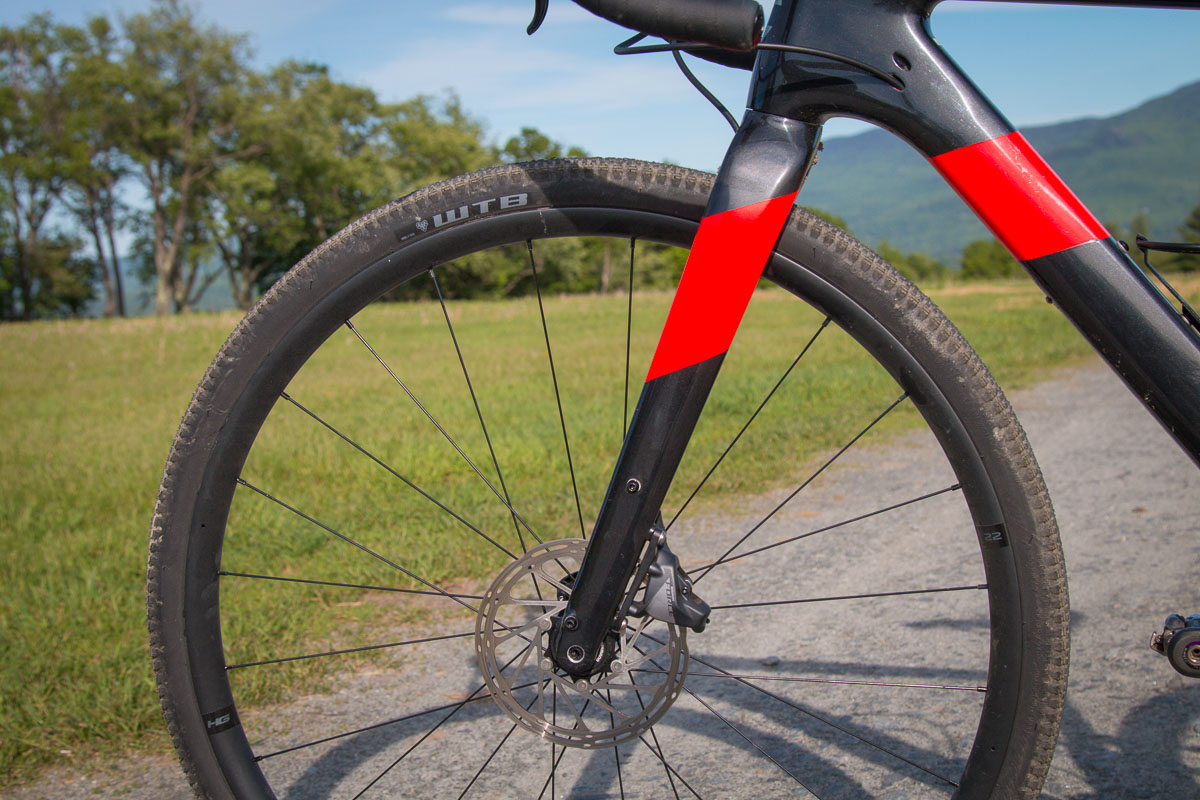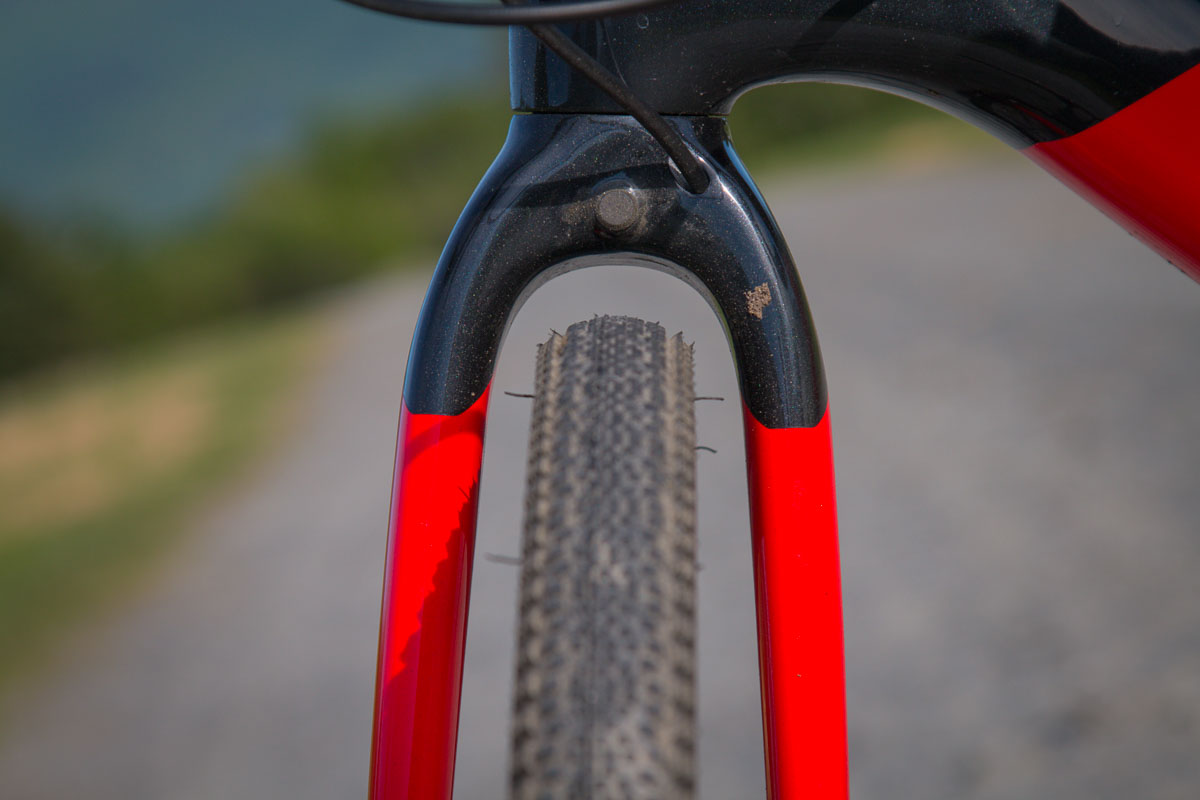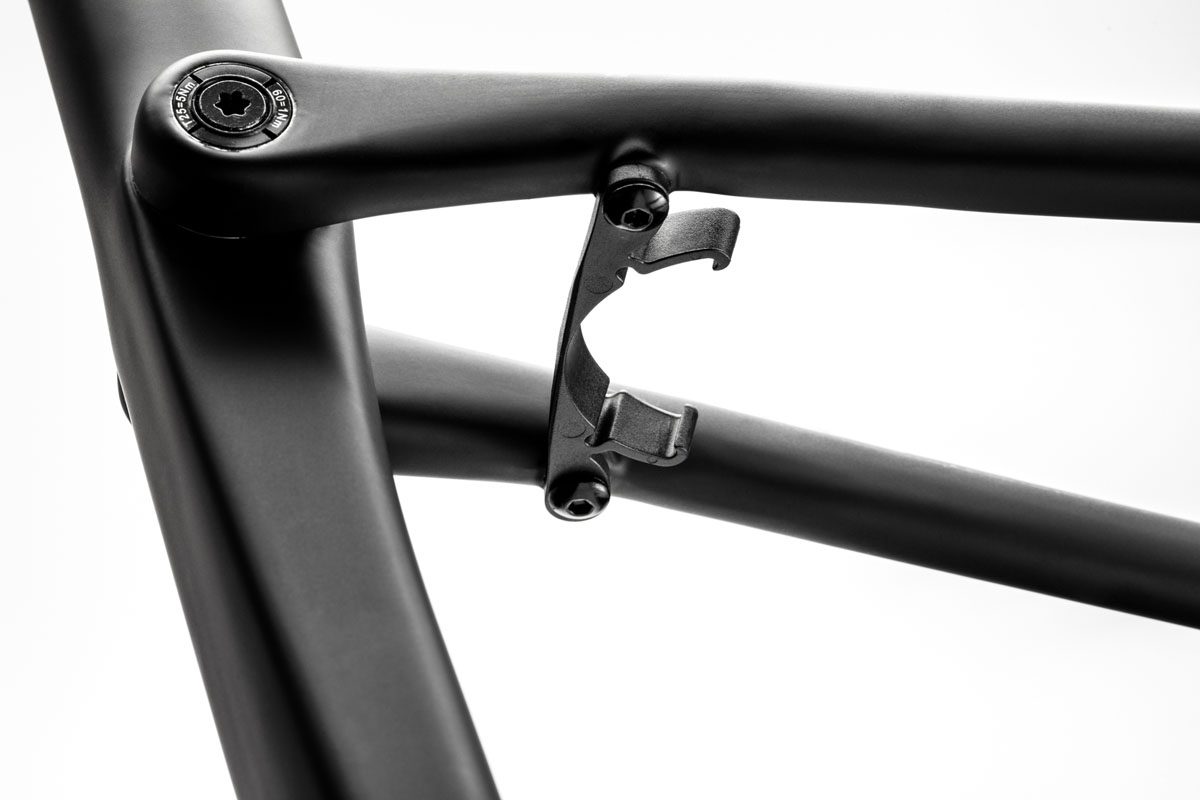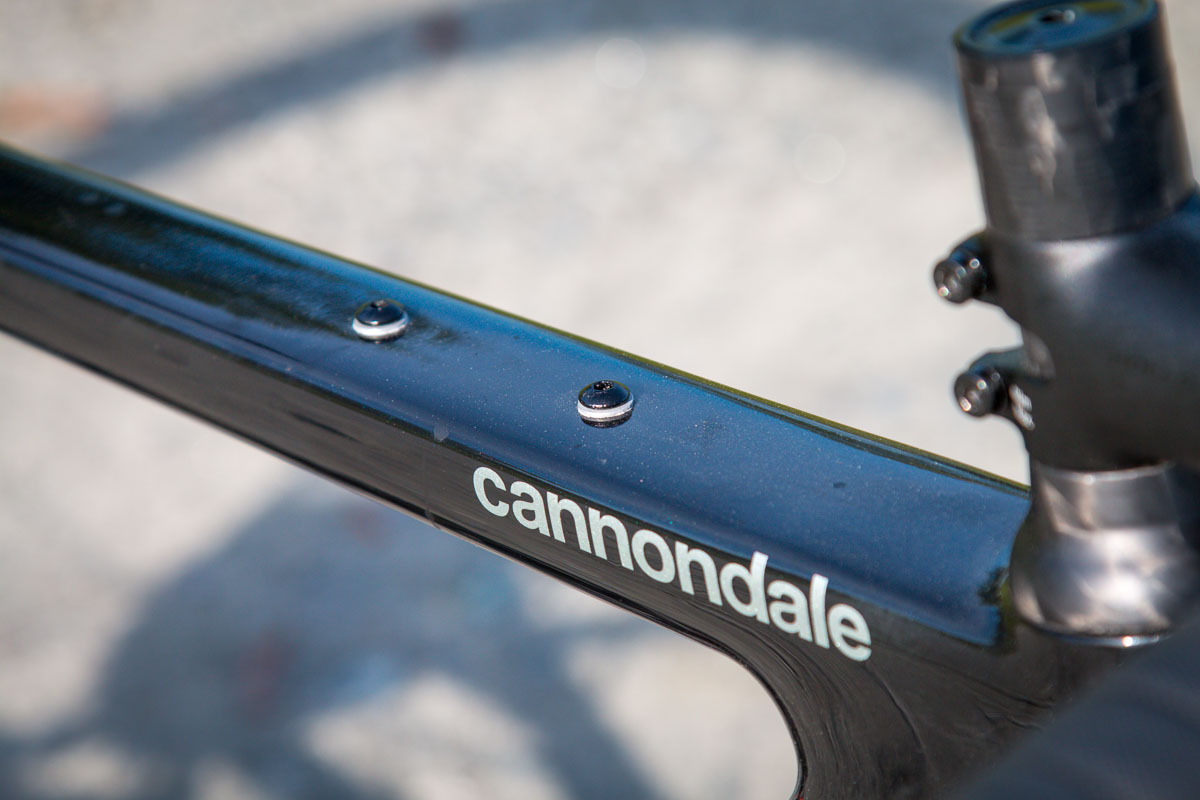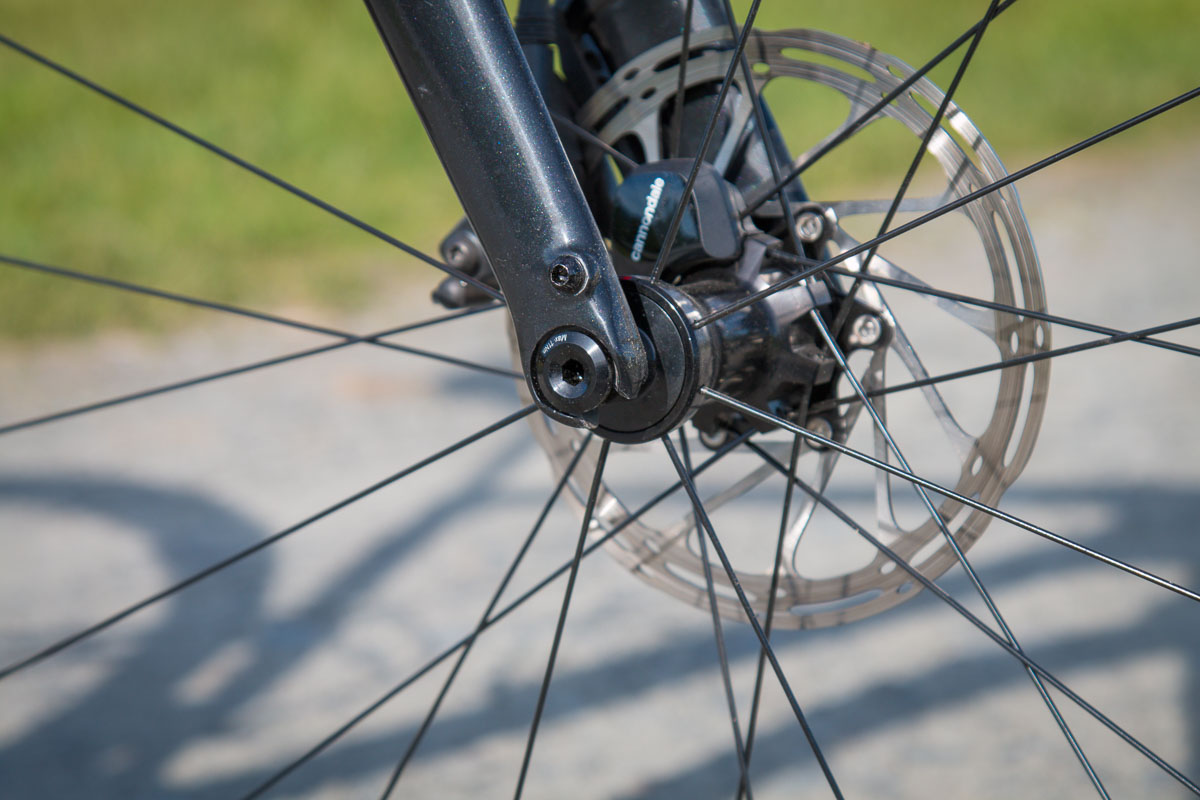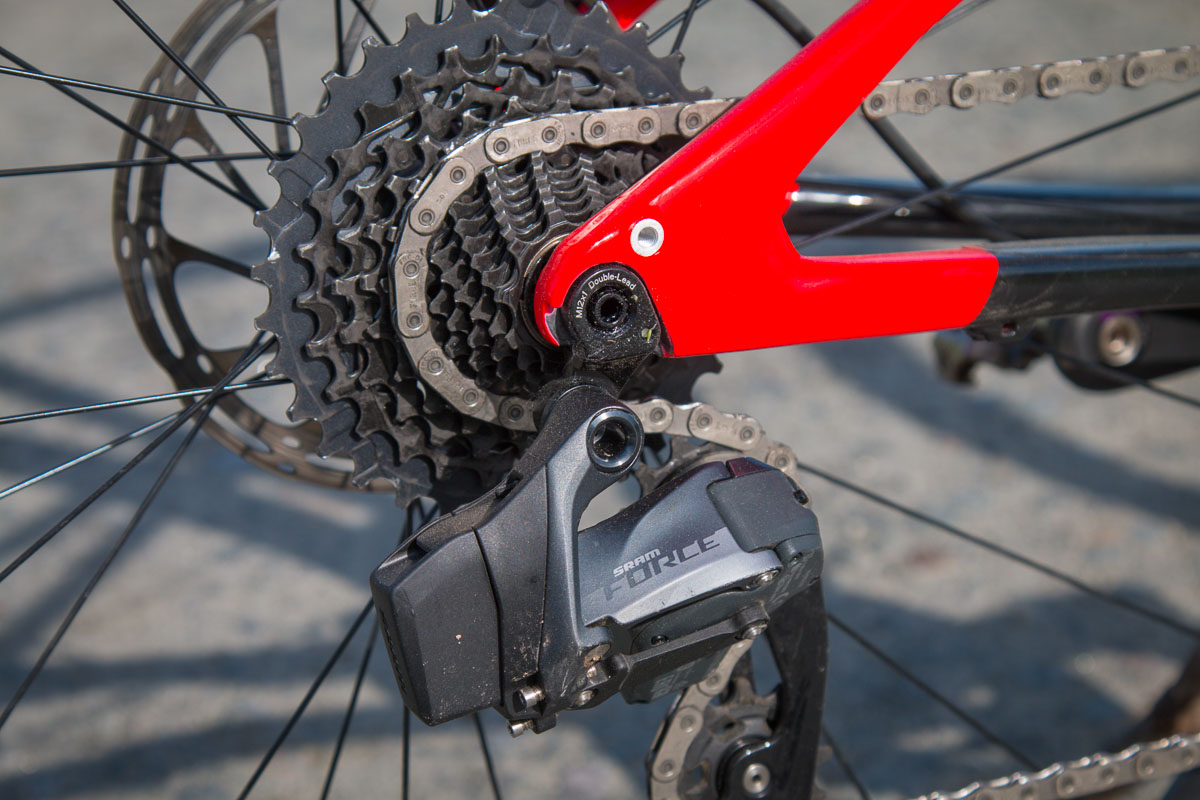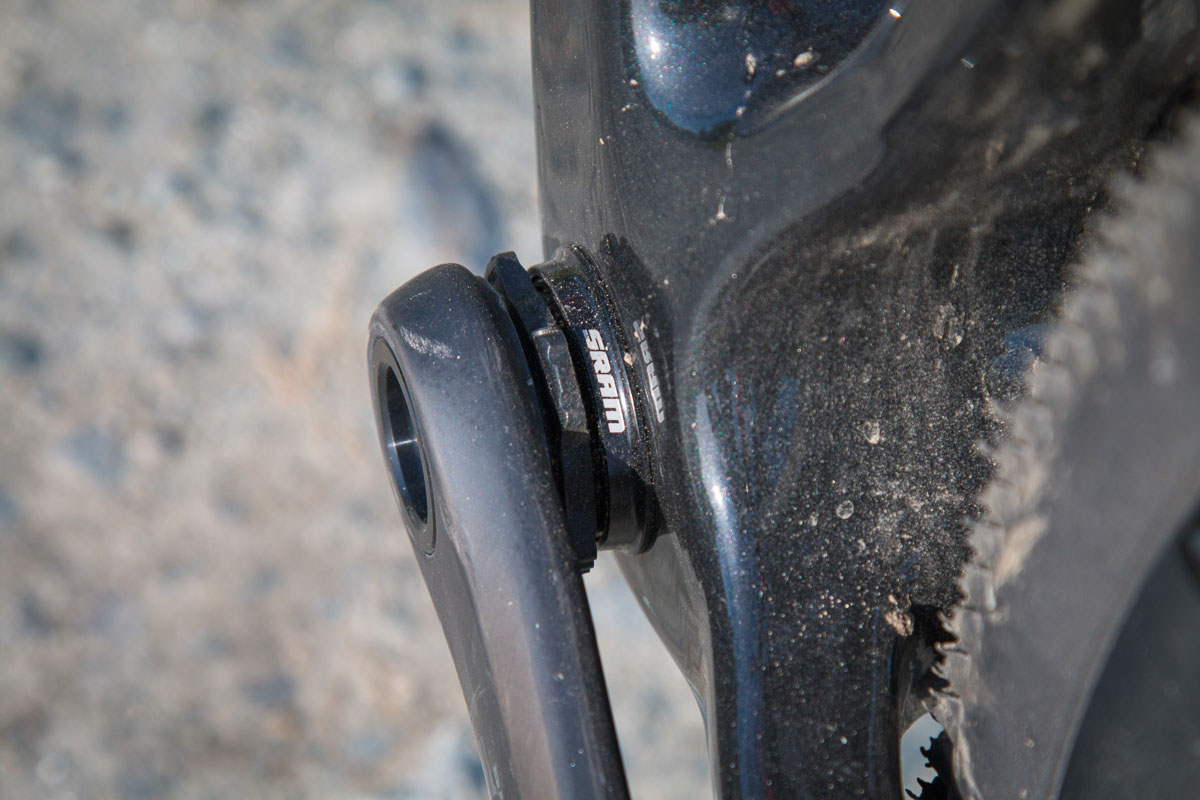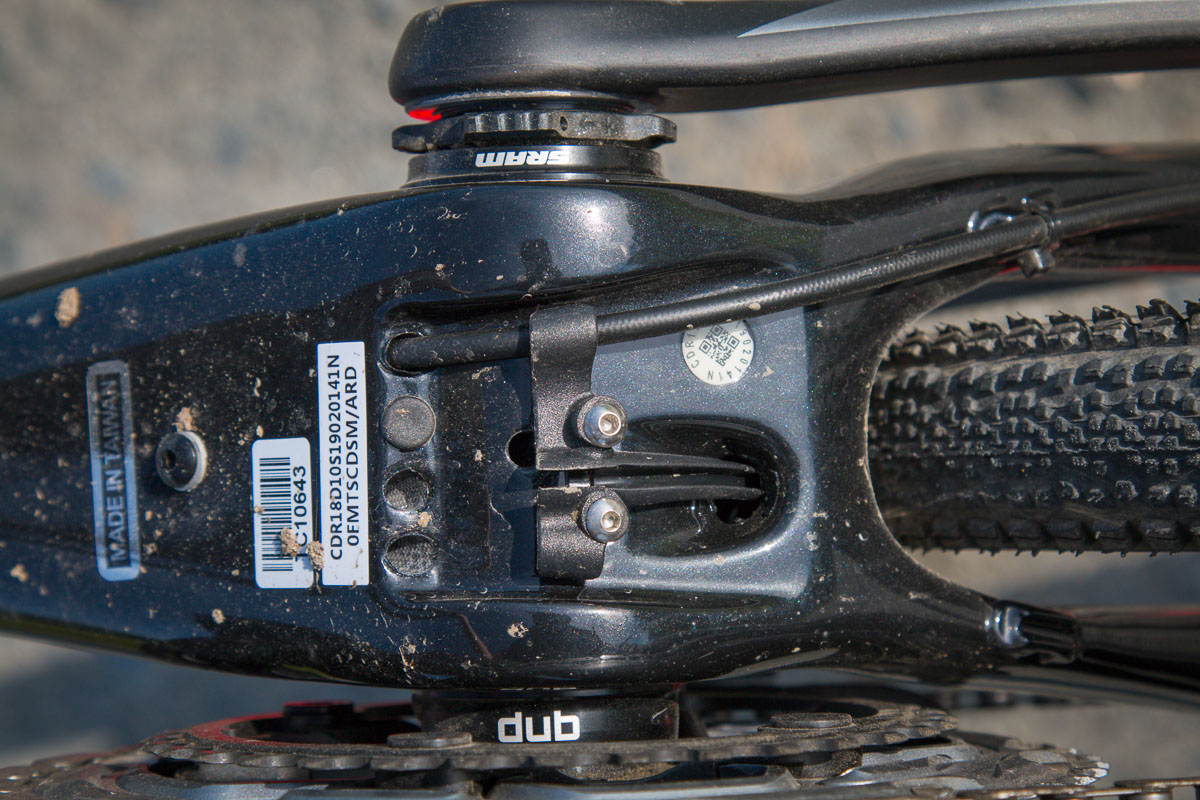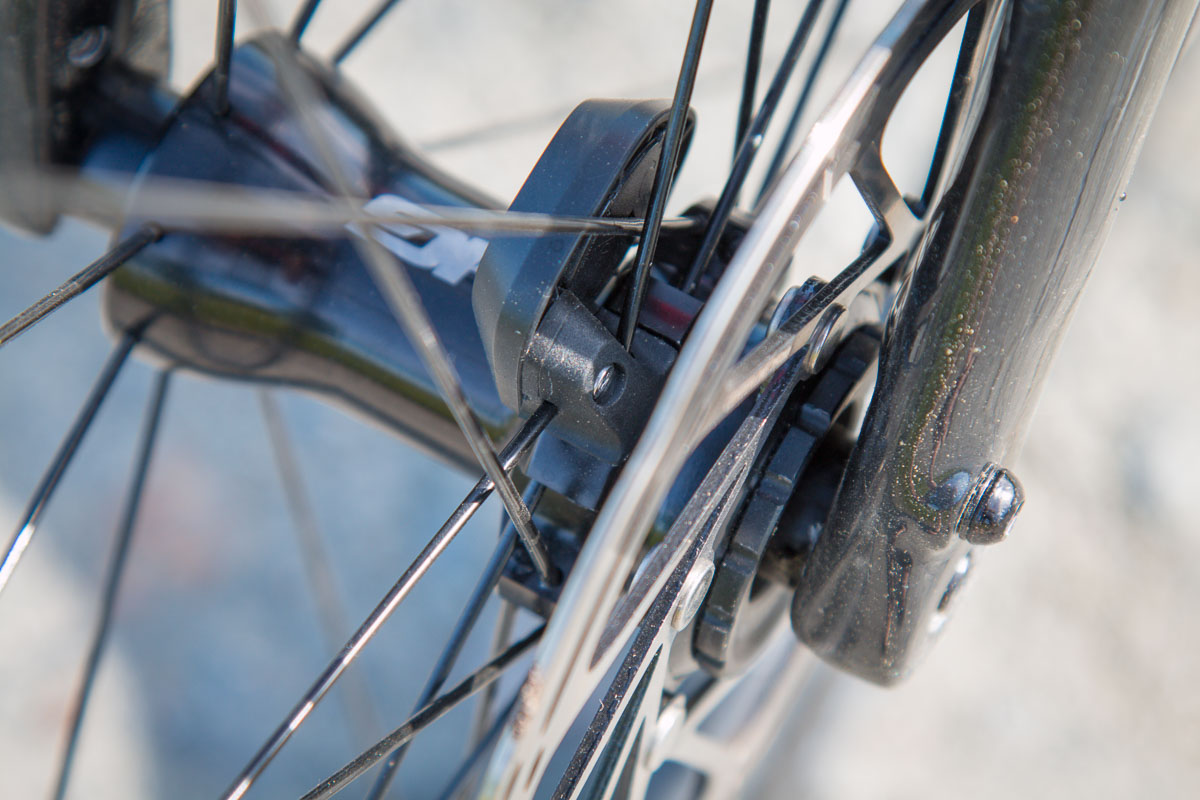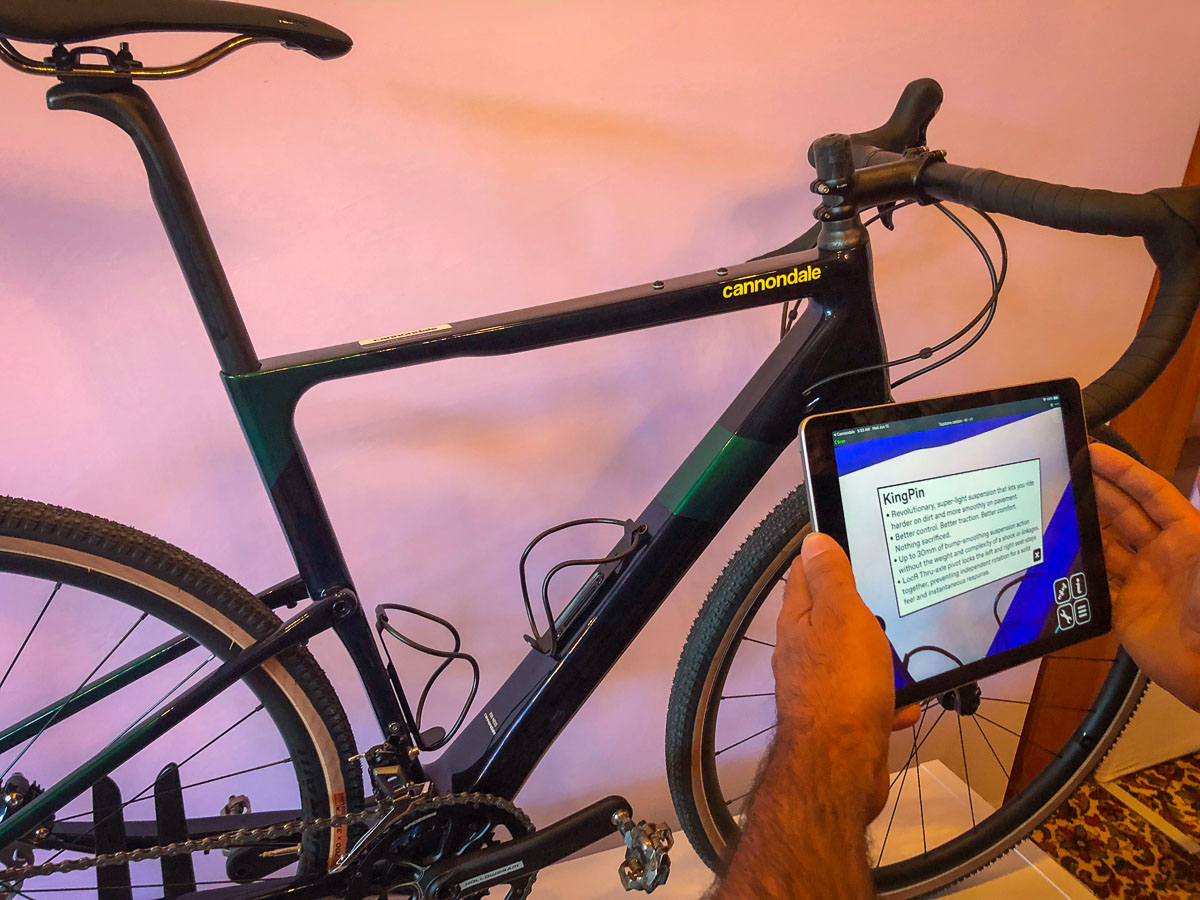How do you make a gravel bike more comfortable? It would seem that many companies are looking towards suspension to find the answer. But as Cannondale’s engineers and product managers will tell you, it isn’t as simple as just slapping a shock or spring to a frame and calling it a day. Starting this project with the aim of creating a bike that is “the most comfortable on road and the most capable off road,” Cannondale tested nearly ever type of suspension they could think of, but in the end, one of the simplest solutions also seemed like the clear winner. With that, Cannondale created the new Topstone Carbon gravel bike featuring their new Kingpin suspension.
Kingpin suspension
Calling Kingpin the first full frame leaf spring system, Kingpin has just one pivot but manages to squeeze out up to 30mm of travel when measured at the seat. While most of the travel is only felt at the saddle when seated, the system does offer a true 10-12mm of travel measured at the rear axle.
To get there, the frame uses engineered flex zones in the chainstays, seat tube, and top tube coupled with the LockR pivot at the seat tube/seat stay junction. While the pivot uses sealed bearings Cannondale says it shouldn’t need much in the way of maintenance – but it can be serviced. You’ll only see about six degrees of rotation around the bearings, but Cannondale felt that the known performance and serviceability that bearings offer made them preferable over bushings.
After miles and miles with modified full suspension road bikes with actual shocks and forks, Cannondale’s testing led them to believe that full suspension wasn’t the way forward. Instead, the Kingpin system keeps it simple, remains super light, works best when you need it most (while seated), and still provides an efficient ride when you’re out of the saddle – though the suspension will still work when out of the saddle. Without a suspension fork up front, the bike also maintains handling more similar to a road bike with a rigid fork.
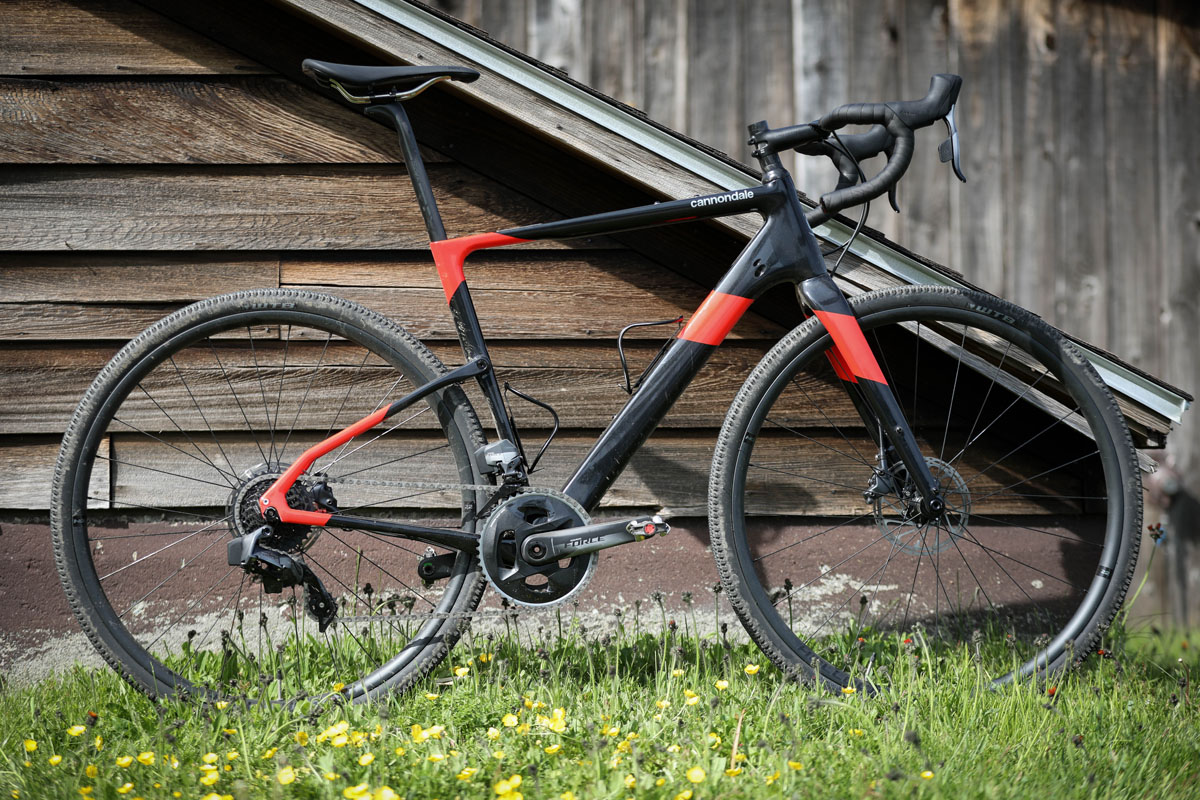
With minimal added weight from the tube shapes and the only added hardware being two bearings, an axle, and a few bolts, the Topstone Carbon frames check in around 1200g for a medium frame. Built with Cannondale’s Proportional Response tubing design, each frame size features its own tube cross sections and laminate designs to adjust the stiffness and ride quality to riders of different size. This is especially important because in this case, the tubes are the springs for the suspension so Proportional Response will have even more of an impact on the final ride quality of the frame.
Geometry
Running a Dialed Endurance Fit, the Topstone Carbon is taller with a shorter reach – and ends up with the same stack and reach as the Cannondale Synapse. Sizes will be offered in XS – XL which translate to 48, 51, 55, 58, and 61cm frames. There is a ‘women’s’ model in the mix as well, though the frame has the same geometry as the standard Topstone Carbon (but limited from XS-M). More importantly, it features stems that are 10mm shorter, and bars that are 20mm narrower along with 5mm shorter cranks.
New HollowGram SAVE bar and stem for top end
While the highest end model uses a new semi-integrated HollowGram SAVE alloy stem and SAVE Carbon bar that still allows for some adjustments to the pitch of the bar, the rest of the line uses a standard stem and bar with flared drops. The SAVE bar/stem combo also allows you to choose different stem lengths or bar widths, though the options are currently limited to 80-130mm for the stem.
The integrated computer mount (AXS model only) is nice in that it can be used with Garmin or Wahoo computers simply by rotating the mount inset. However, there isn’t an index point when used with a Wahoo head unit so it’s just held in place with friction and can still rotate. When you’re not using the integrated computer mount, the hole is plugged with an Si logo.
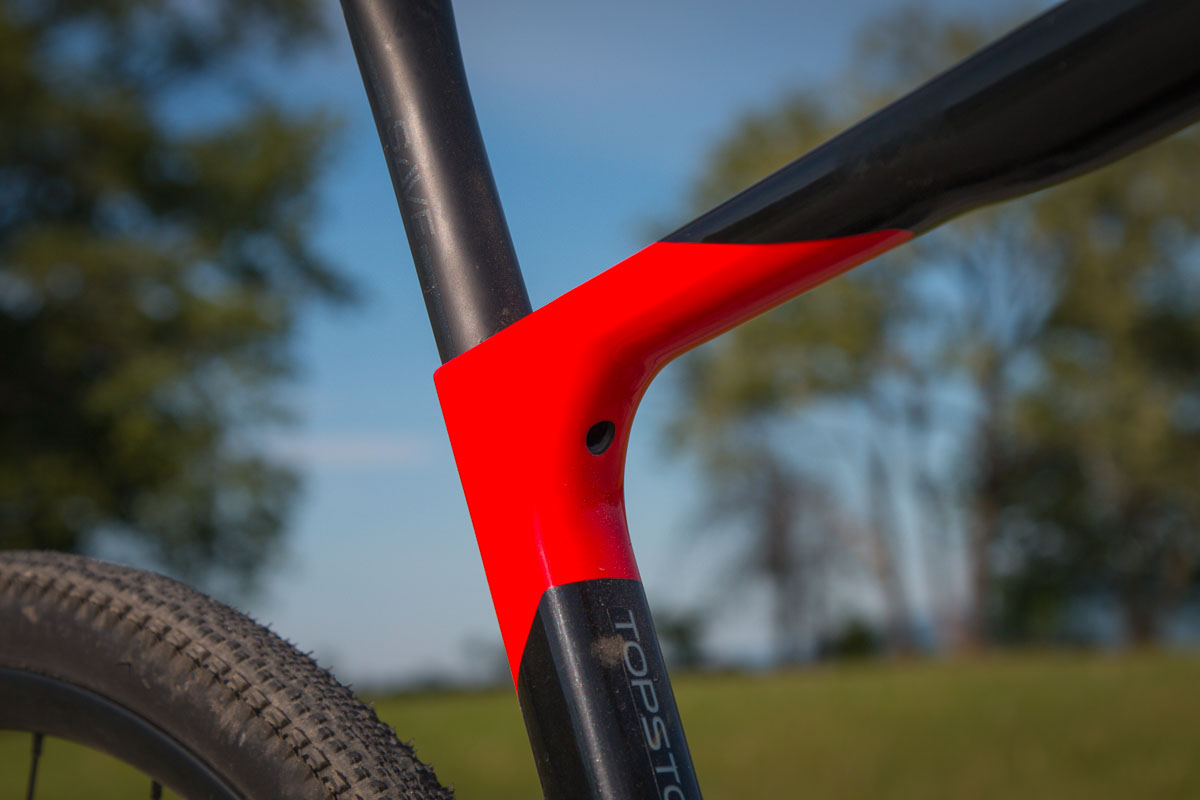
At the seat post, you’ll find a standard 27.2mm diameter post is used with an integrated seat collar hidden under the top tube. You’ll also find the ability to run a 27.2mm dropper seat post with internal cabling.
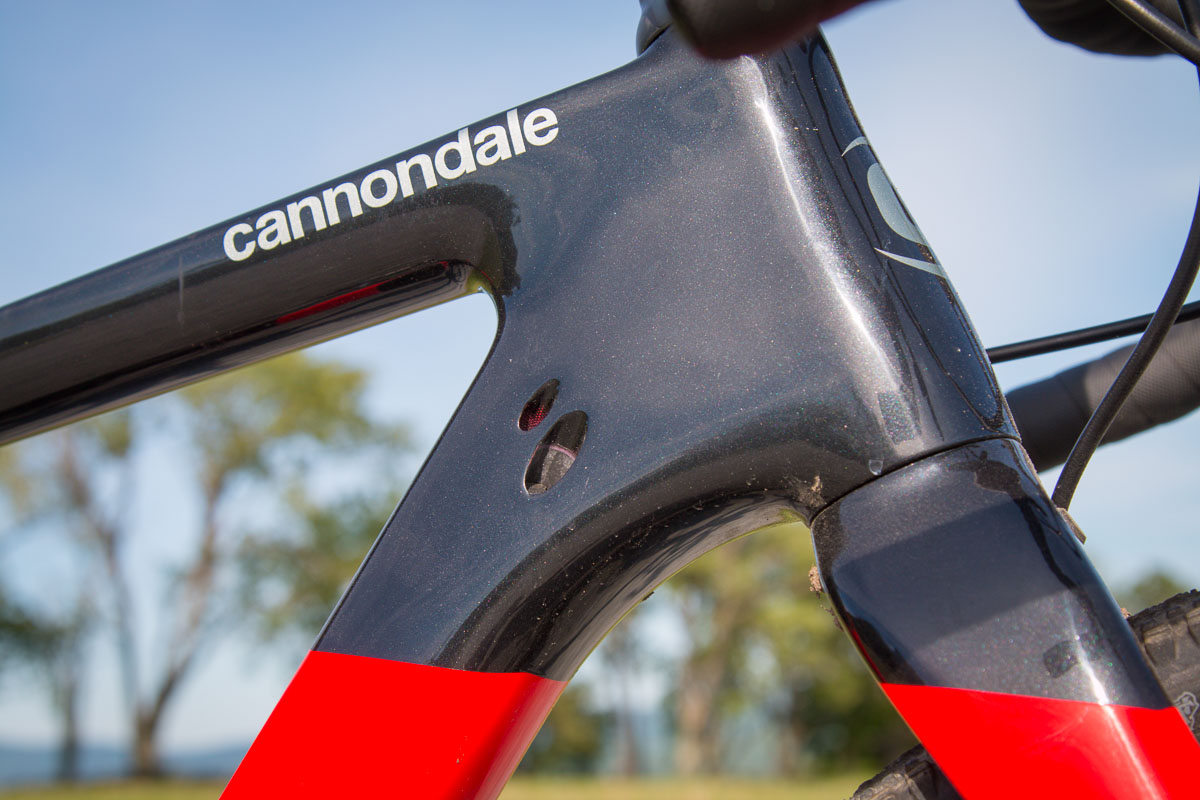
DirectLine internal cable routing throughout the frame should take the hassle out of maintenance with internal tube guides all the way through the frame.
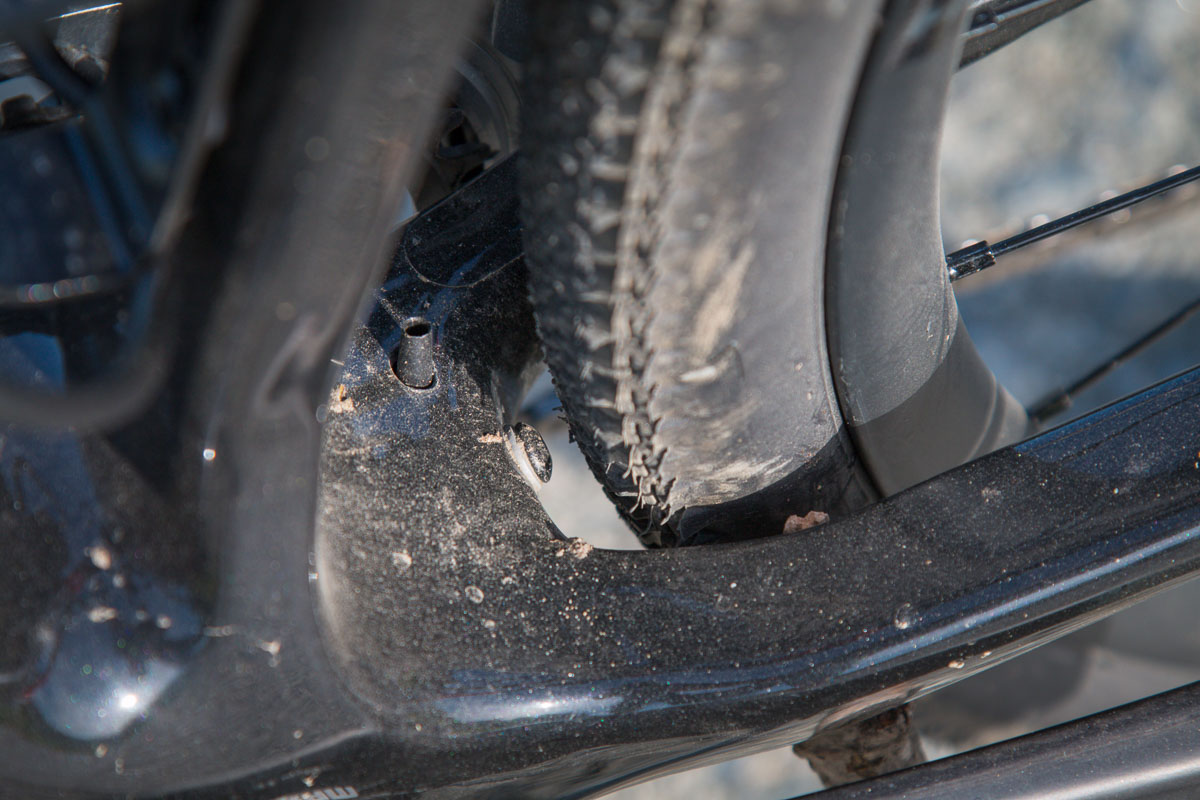
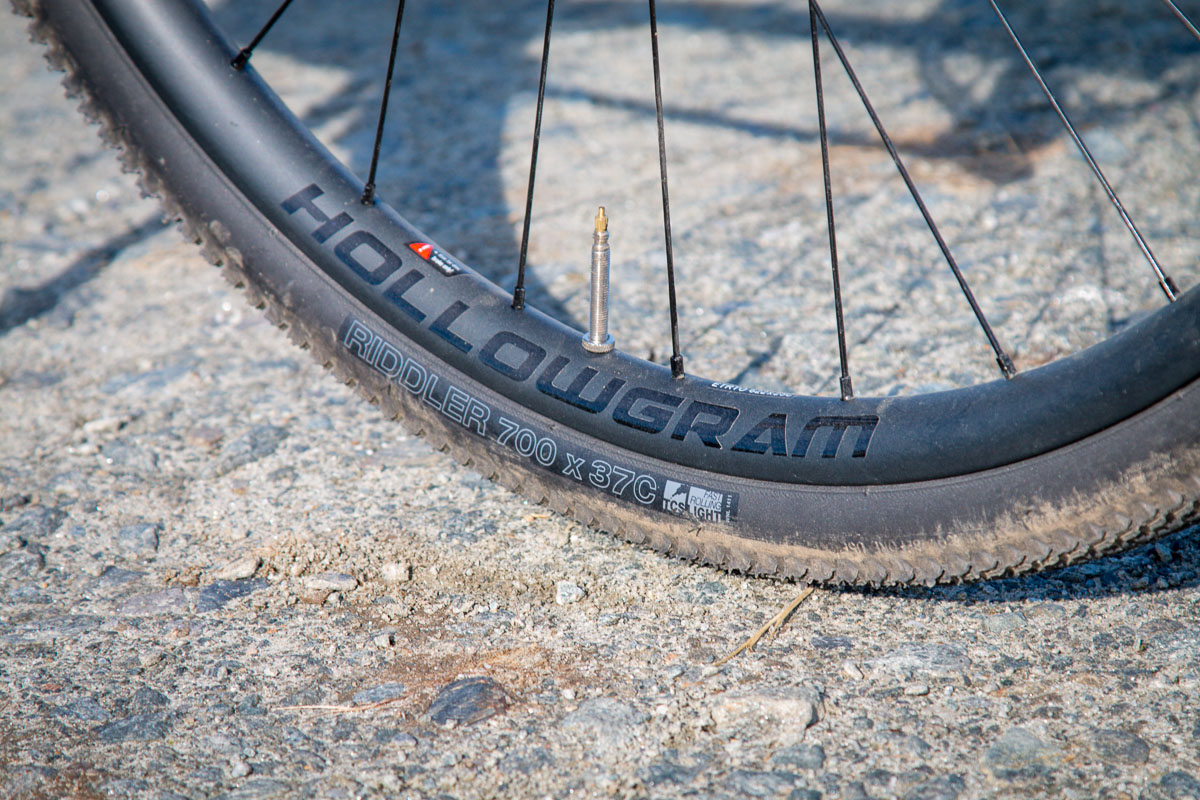
Tire clearance and fenders (and racks)
When it comes to tires, the Topstone Carbon will ship with 700c x 37mm WTB Riddler TCS tubeless tires on 25mm internal width rims, but the frame and fork have clearance for up to 700c x 40mm or 650b x 48mm.
There’s also room for fenders with a removable fender bridge out back. There’s even provisions up front to mount a front rack which Cannondale says is a first for one of their road bikes.
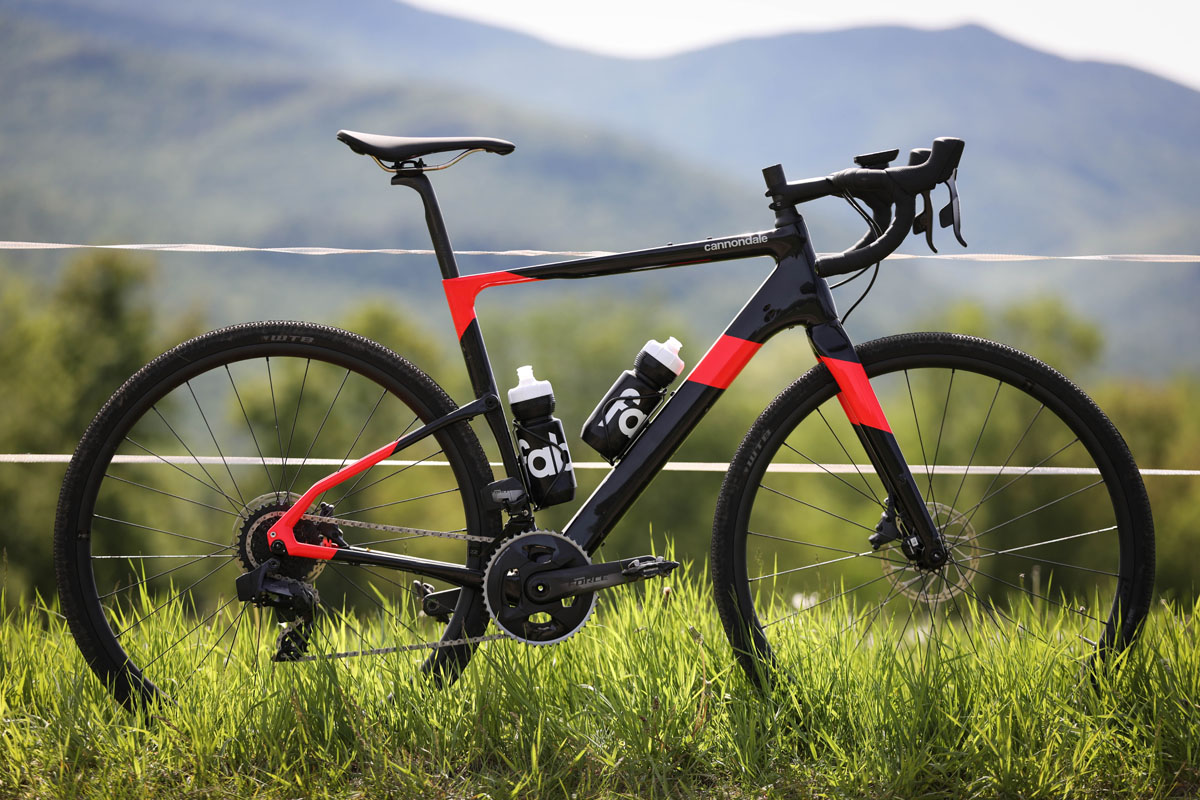
To carry water and cargo, each frame has three bottle mounts that will fit a 24oz bottle and the top tubes feature an accessory mount for bags. The bottle mount on the inside of the downtube uses three bosses so you can position your bottle where it best fits. For the use of the Topstone Carbon, Cannondale didn’t see the need to add additional mounts to the fork legs.
Running 12 x 100 and 12 x 142mm axles, the Topstones include custom bolt on Speed Release axles which allow the wheels to drop out of the frame and fork with just a few turns. They’re also compatible with QR Speed Release axles with a dual lead thread if you wanted a tool free tire change.
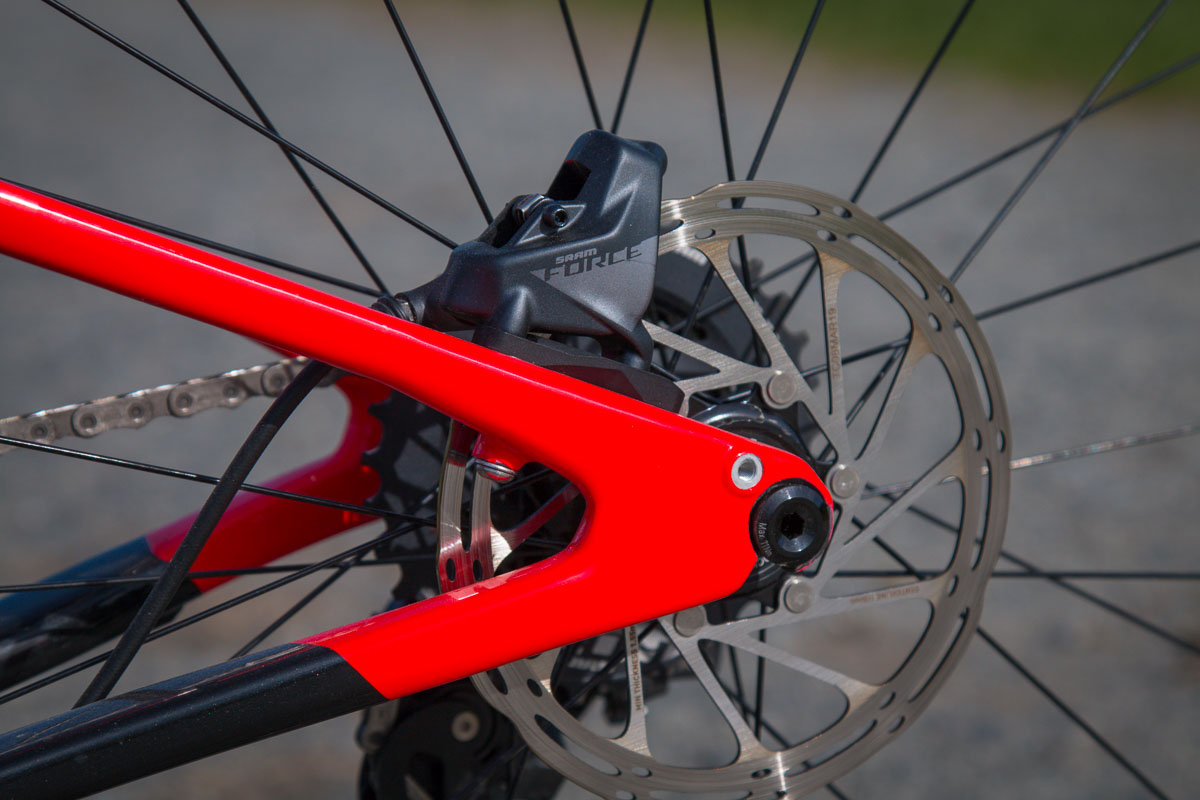
Compatible with 1x or 2x drivetrains in mechanical or electronic, the Topstone includes Flat Mount disc brakes with 160mm rotors front and rear.
Proprietary Bottom Bracket
It also uses the Cannondale-specific BB30-83 AI which requires a specific crankset and a specific dish for the rear wheel (Cannondale offers three compatible cranksets, SRAM offers an option, and there are replacement spindle options as well). This bottom bracket design has been in use by Cannondale since 2014 and has been used on the Scalpel, F-Si, SuperX, and now the Topstone Carbon as it allows them to build a frame with super short chainstays while maintaining room for big tires and front derailleurs. Essentially, the bottom bracket uses a BB30 bottom bracket that is spaced at 83mm while the drivetrain gets moved out by 6mm. Thanks to the additional clearance provided, the Topstone actually has shorter chainstays than the SuperX by 4mm.
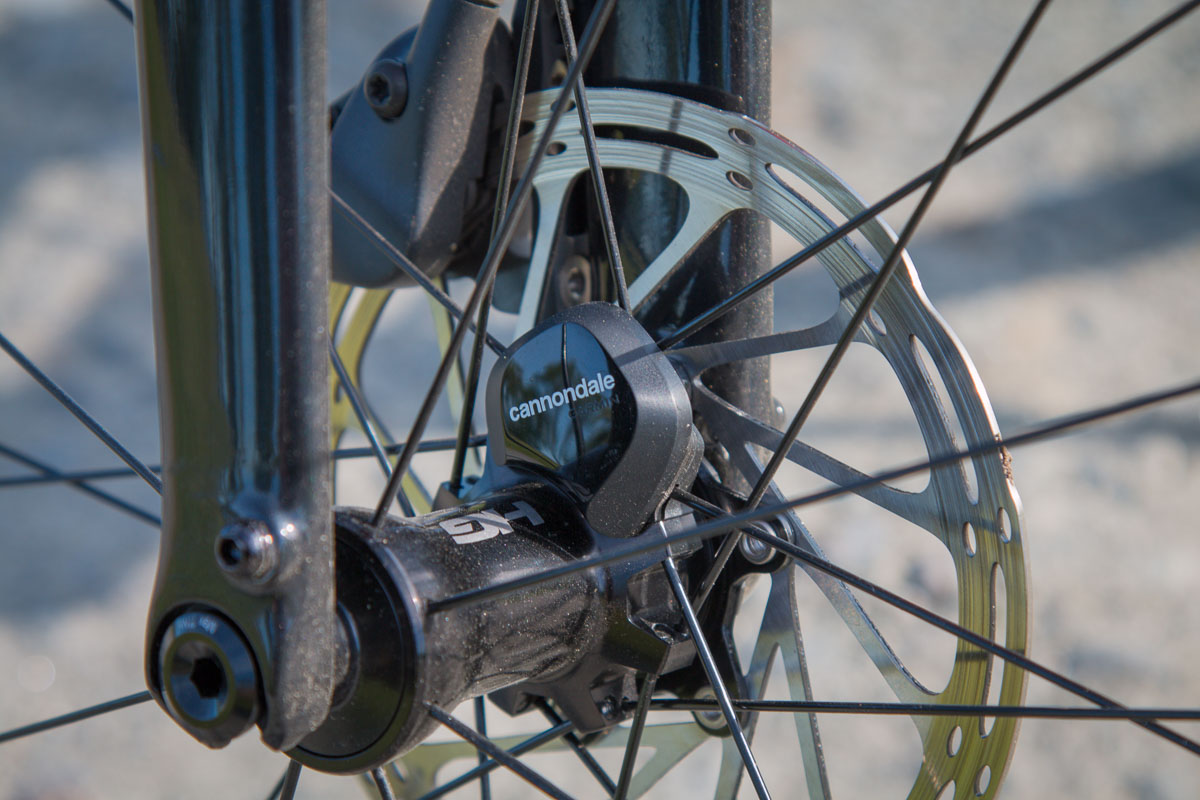
Connected bikes and Augmented Reality?
After the recent Treadwell launch, Cannondale is pushing hard into the connected side of things by including the wheel sensor that was developed with Garmin on all of their models. When paired with the free Cannondale App, it allows you to have hyper accurate measurement of speed, distance, and other metrics with or without your phone, or you can pair it with your GPS.
More impressive to me though was their Tech X-Ray feature with Augmented Reality that could be a game changer for bicycle service and maintenance. Need to know the torque values for the Kingpin pivot? Maybe you want to visualize how the cables route through the frame? If so, you can boot up the feature on the app and use AR to see the pertinent tech information as you move the phone or tablet over the bike. We’ll have more on this later, but it was super cool.
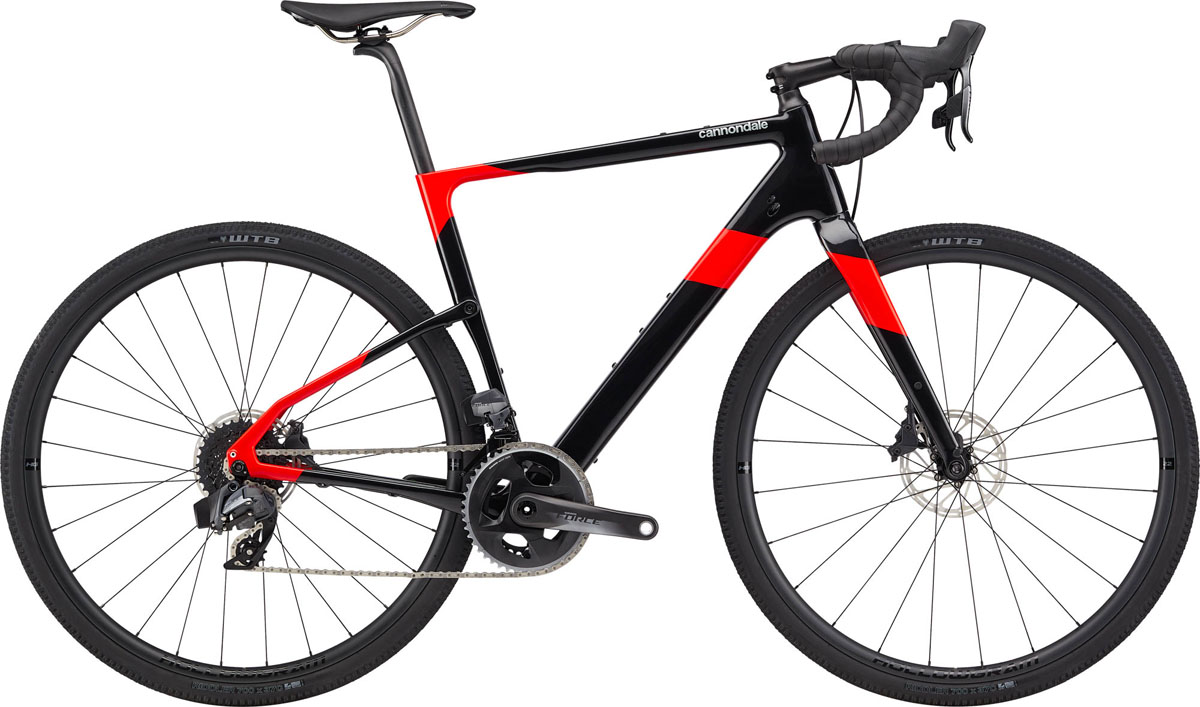
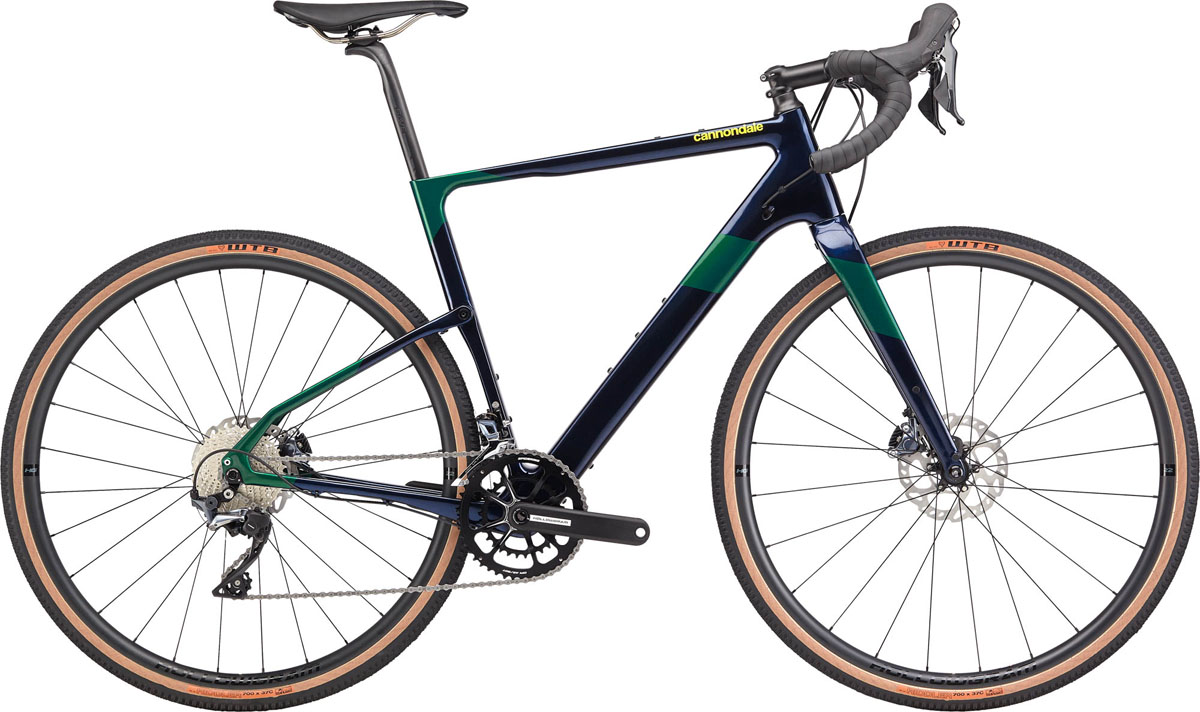
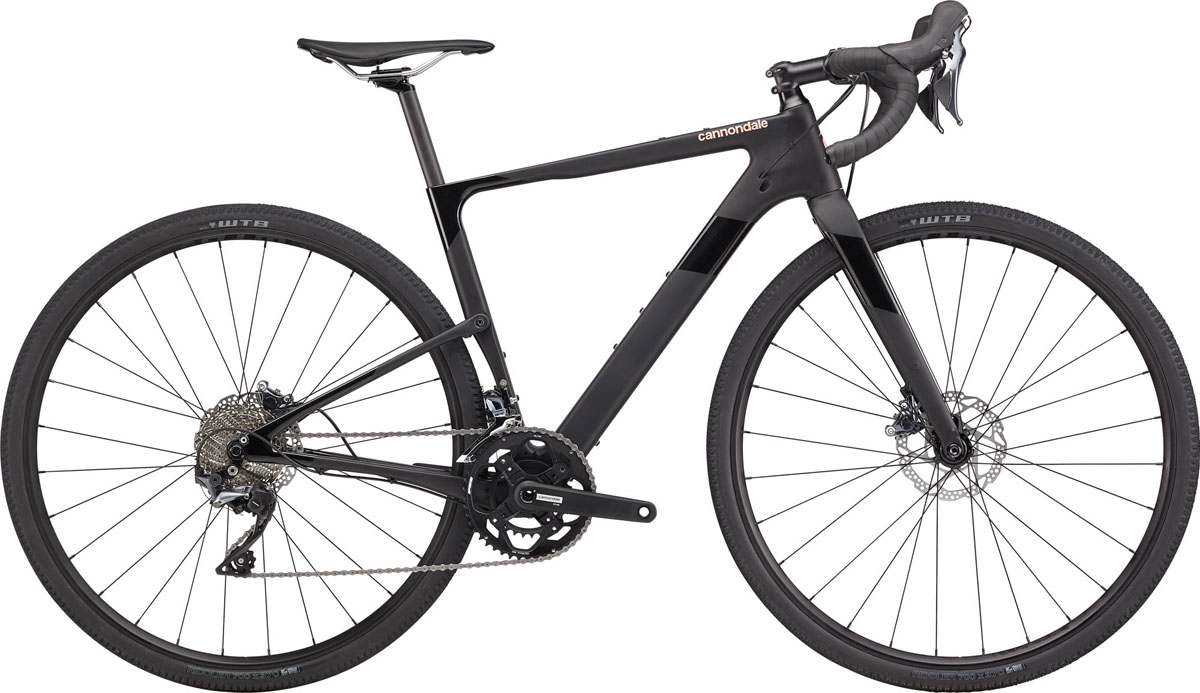
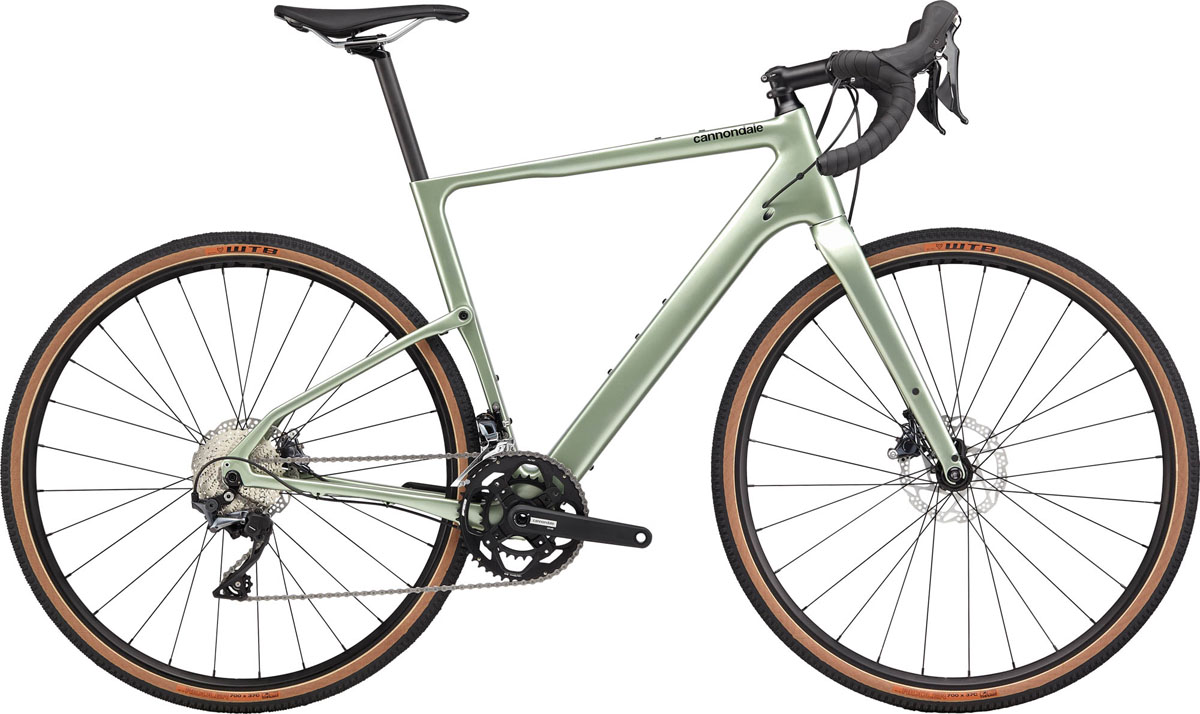
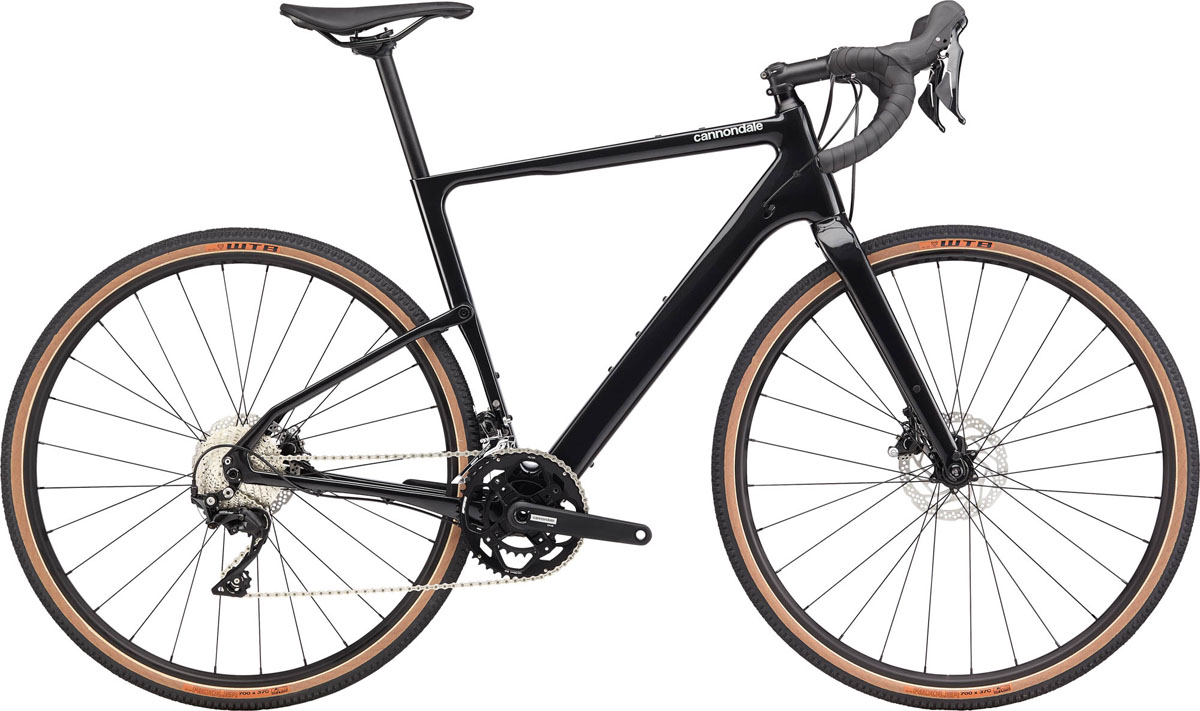
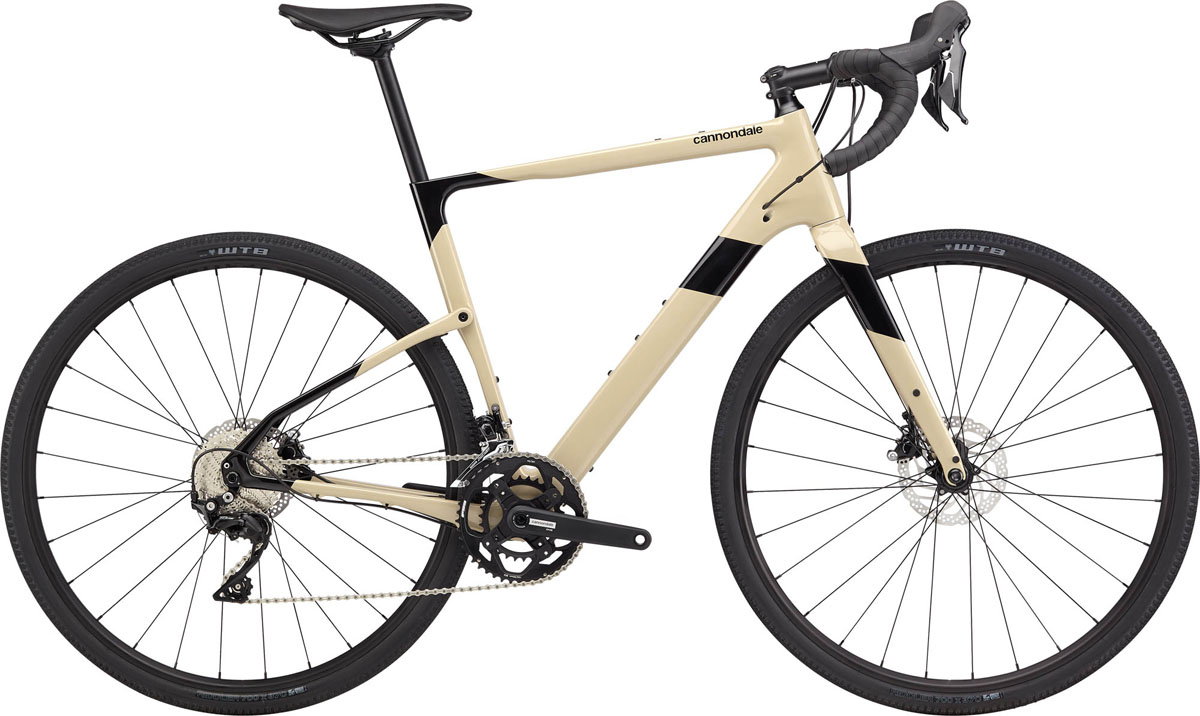
Models
In total, there will be five Topstone Carbons added to the line up with a Force eTAP AXS, Ultegra RX, Ultegra RX 2, and 105 version plus a Women’s Ultegra RX 2 model. Pricing starts out at $2,700 for the Topstone Carbon 105, and tops out at $6,500 for the Carbon Force eTap AXS version.
First ride impressions coming up next!
